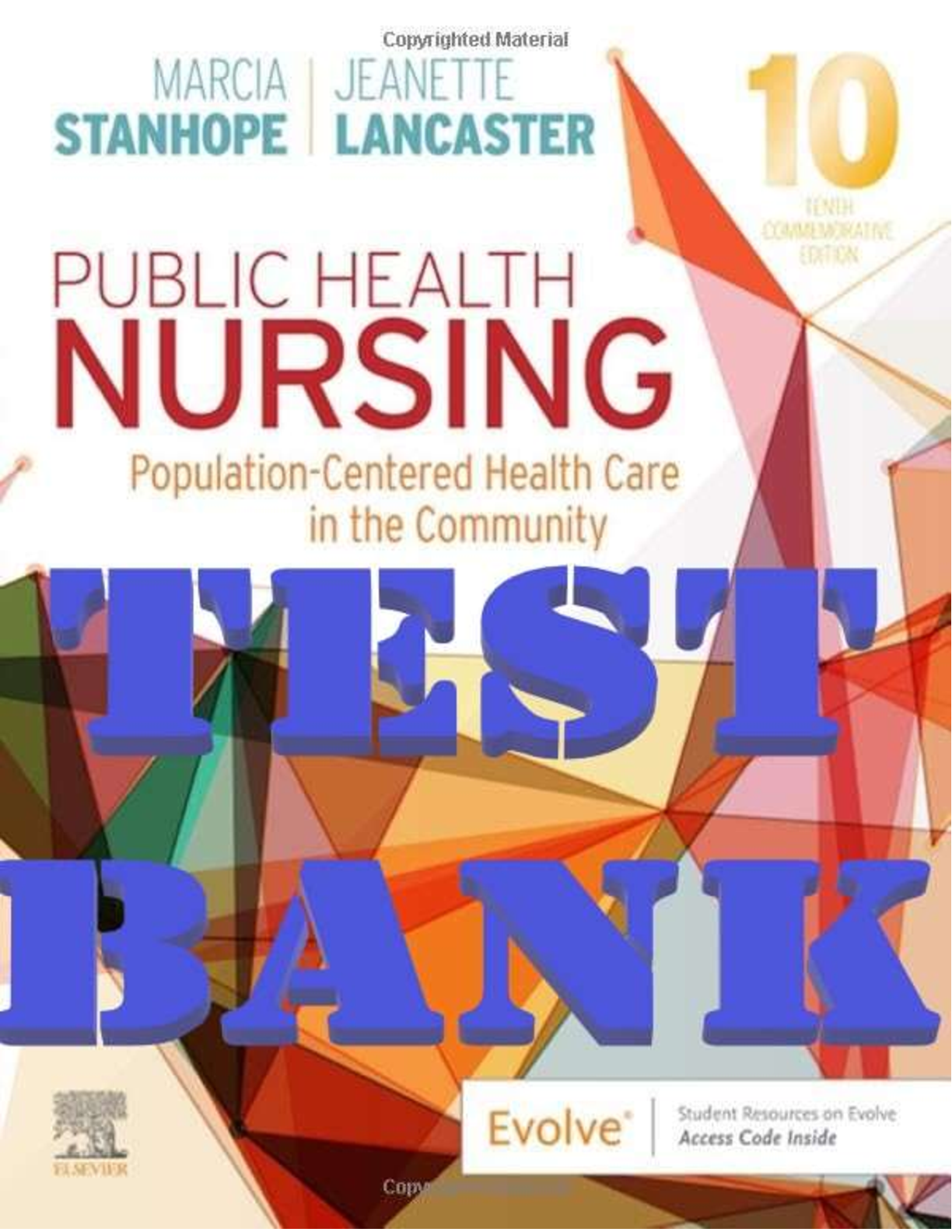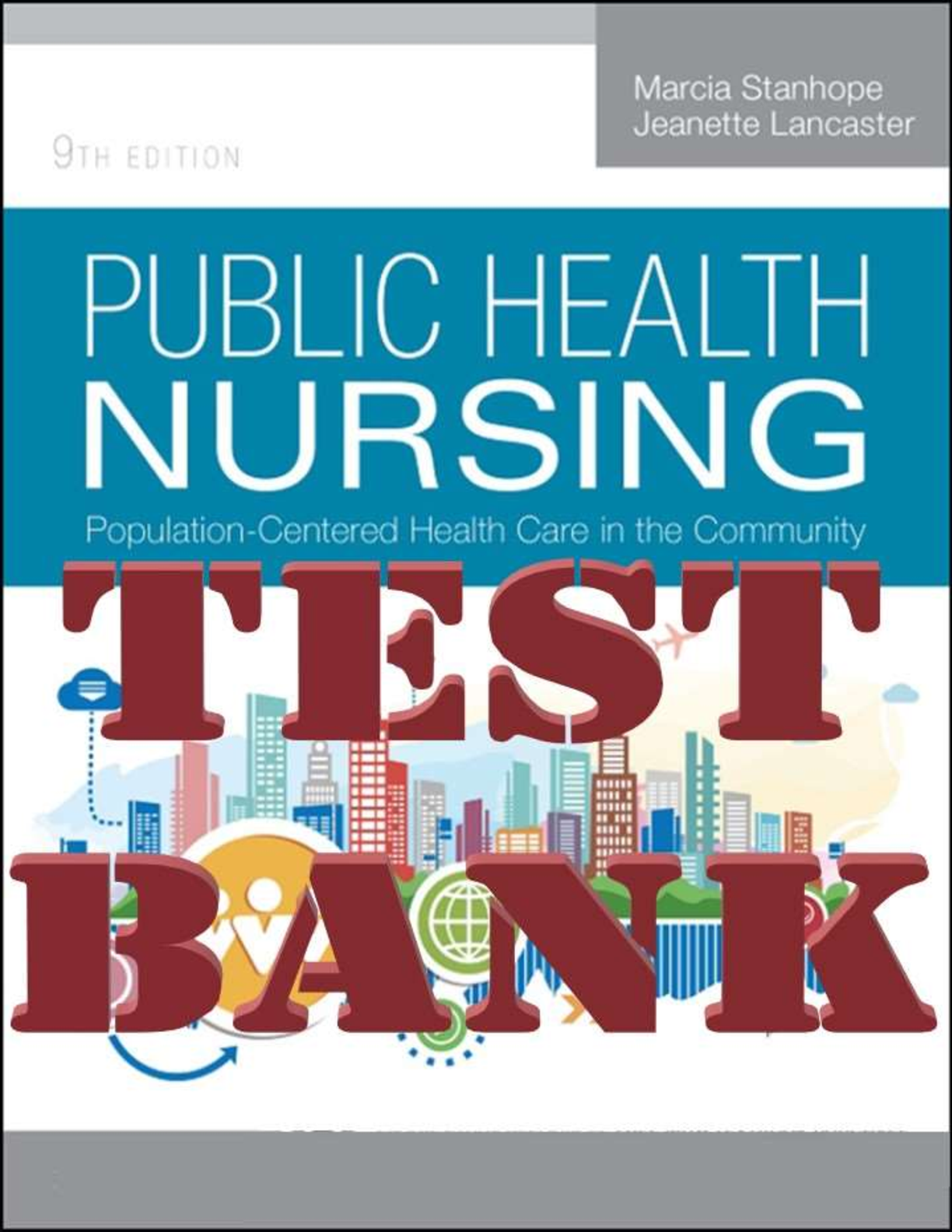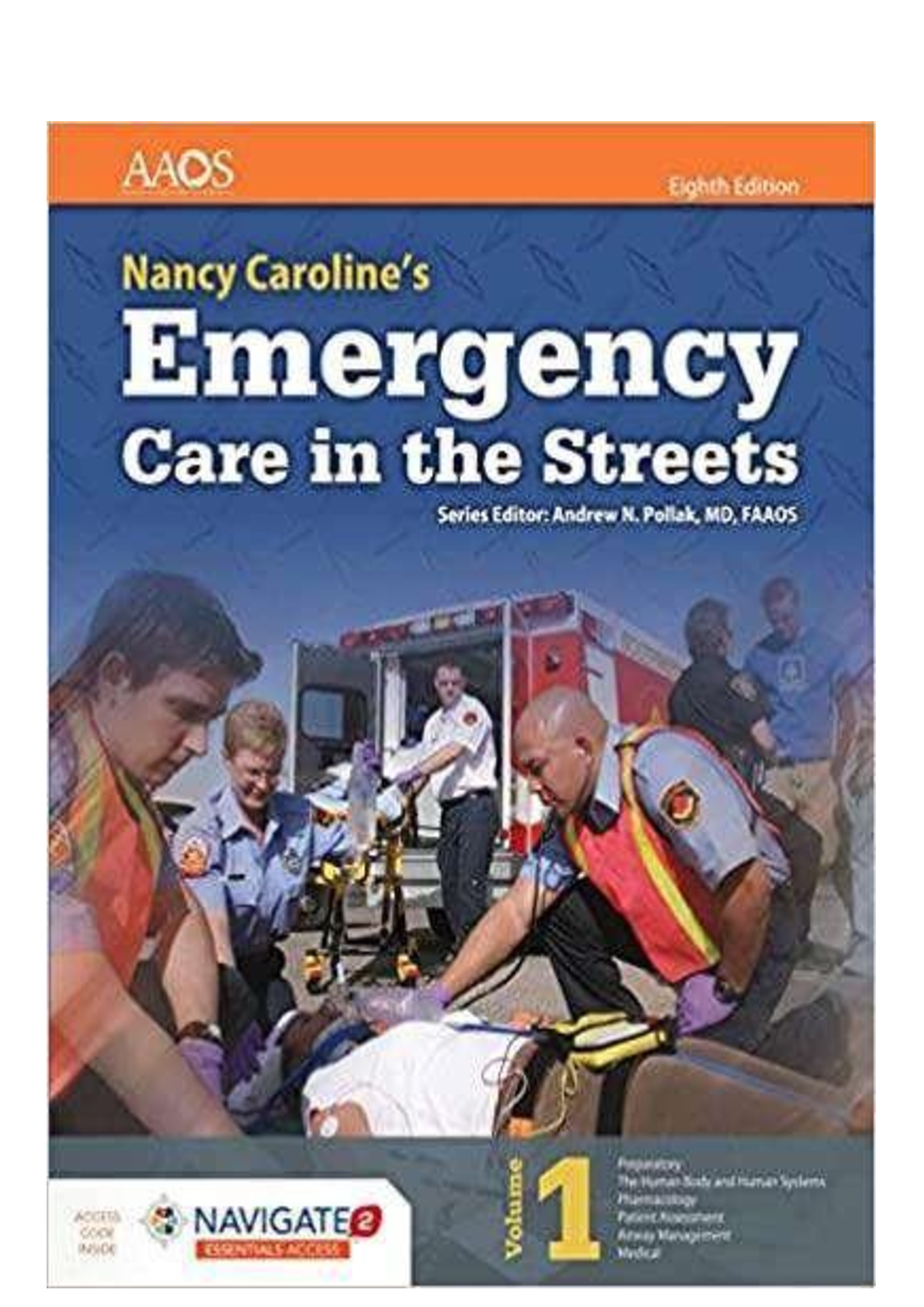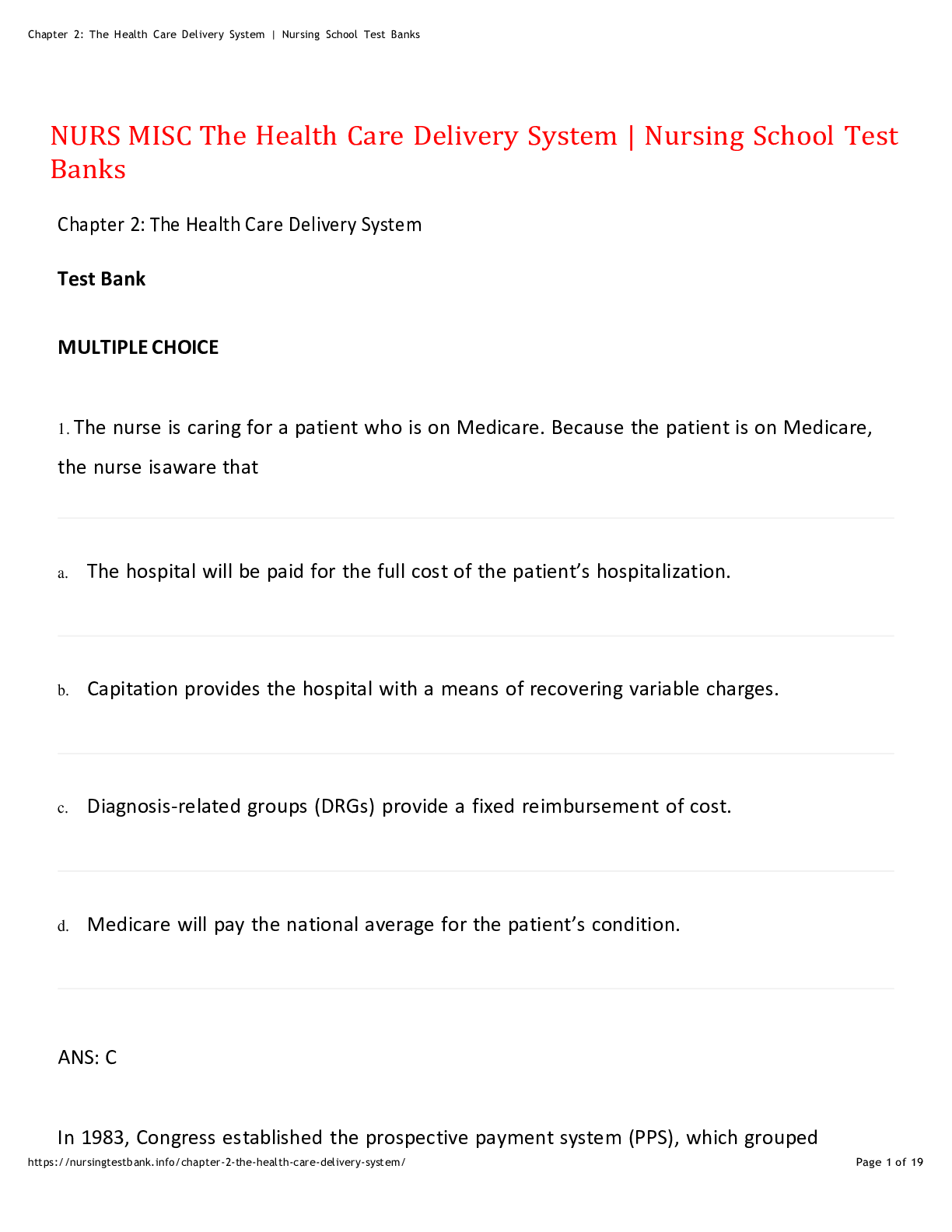*NURSING > TEST BANK > Economics of Health Care Delivery Stanhope: Public Health Nursing: Population-Centered Health Care i (All)
Economics of Health Care Delivery Stanhope: Public Health Nursing: Population-Centered Health Care in the Community, 10th Edition,100% CORRECT
Document Content and Description Below
Economics of Health Care Delivery Stanhope: Public Health Nursing: Population-Centered Health Care in the Community, 10th Edition MULTIPLE CHOICE 1. Which statement regarding poverty and healt... h insurance is true? a. Millions of people in the United States are without health insurance. b. The poor in the United States are as healthy as persons with higher incomes. c. Persons with money or health insurance are less likely to seek health care. d. The poor are more likely to receive health care through private agencies. ANS: A In 2016, 28.1 million people were without health insurance in the United States. The poor in the United States are generally not as healthy as persons with middle or higher incomes. Persons with money and/or health insurance are more likely to seek health care. The poor are less likely to receive health care through private agencies. DIF: Cognitive level: Understanding TOP: Nursing process: Assessment MSC: NCLEX: Safe and Effective Care Environment: Management of Care 2. The allocation of scarce resources within the health care sector and the focus on resource allocation issues related to producing and distributing health care is referred to by what term? a. Economics b. Health economics NURSINGTB.COM c. Public health economics d. Microeconomic theory ANS: B Health economics is the allocation of scarce resources within the health care sector and the focus on resource allocation issues related to producing and distributing health care. Economics is the science concerned with the use of resources, including the production, distribution, and consumption of goods and services. Public health economics focuses on the production, distribution, and consumption of goods and services as related to public health and where limited public resources might best be spent to save lives or increase the quality of life. Microeconomic theory deals with the behaviors of individuals and organizations and the effects of those behaviors on prices, costs, and the allocation and distribution of resources. DIF: Cognitive level: Remembering TOP: Nursing process: Assessment MSC: NCLEX: Safe and Effective Care Environment: Management of Care 3. Public health economics focuses on what? a. Use of resources. b. Availability and usage of goods and services related to public health. c. Scarcity of resources in the health care industry. d. Management and use of monies to improve the health of populations. ANS: B Public health economics focuses on producing, distributing, and consuming goods and services related to public health. Economics is the science concerned with the use of resources, including the production, distribution, and consumption of goods and services. Health economics is the allocation of scarce resources within the health care sector and the focus on resource allocation issues related to producing and distributing health care. Public health finance involves the acquiring, managing, and use of monies to improve the health of populations through disease prevention and health promotion strategies. DIF: Cognitive level: Understanding TOP: Nursing process: Assessment MSC: NCLEX: Safe and Effective Care Environment: Management of Care 4. A nurse discusses services with a federal Congressional representative. Which service would the nurse most likely be discussing? a. Family planning b. Counseling c. Policy making d. Prevention of communicable diseases ANS: C Policy making is offered at the federal level. Family planning, counseling, and preventing communicable and infectious disease are offered at the state and local levels. DIF: Cognitive level: Understanding TOP: Nursing process: Implementation MSC: NCLEX: Safe and Effective Care Environment: Management of Care 5. A business offers wellness NinceRntivIes tGo itBs e.mCploMyees and then notices a decrease in the frequency of physician visits among employees. Which term best describes what has happened? a. Macroeconomic theory b. Efficiency c. Supply and demand d. Microeconomic theory ANS: D Microeconomic theory is examining the behaviors of individuals and organizations that result from trade-offs in utility and budget constraints of health care. Efficiency refers to producing maximum output using a given set of resources. Supply and demand are two basic principles of microeconomic theory. Macroeconomic theory focuses on the “big picture.” DIF: Cognitive level: Understanding TOP: Nursing process: Evaluation MSC: NCLEX: Safe and Effective Care Environment: Management of Care 6. A nurse is using the principles of supply and demand in daily practice. Which situation describes this phenomenon? a. The demand for nurses in public health is low, but the supply is high. b. When few goods or services are available, the price tends to rise. c. When supplies are low, nurses must find alternate resources. d. Lesser-developed countries receive supplies from other countries. ANS: B Supply and demand is in force when few goods or services are available, and then the price tends to rise. The other examples do not demonstrate the use of the laws of supply and demand. DIF: Cognitive level: Analyzing TOP: Nursing process: Evaluation MSC: NCLEX: Safe and Effective Care Environment: Management of Care 7. A nurse is faced with a macroeconomics issue. Which situation describes what is happening? a. The evaluation of client access to services b. A health policy that makes the development of a new program possible c. Informing clients and others of the cost of service d. The referral of clients to available services ANS: B Macroeconomics focuses on the “big picture,” such as a program, whereas microeconomics focuses on the individual or organization. DIF: Cognitive level: Analyzing TOP: Nursing process: Evaluation MSC: NCLEX: Safe and Effective Care Environment: Management of Care 8. A public health nurse applies the principles of the macroeconomics theory when working with a community. Which statement best describes why this theory would be used? a. The nurse is concerned with factors that determine prices and affect resource allocation. NURSINGTB.COM b. The nurse is concerned with the positive effect of competitiveness on health care costs. c. The nurse is concerned with the supply, demand, and costs of services available to their clients. d. The nurse is concerned with the policies to support programs to improve the health of the community. ANS: D Macroeconomic theory focuses on the “big picture”—the total, or aggregate, of all individuals and organizations (e.g., behaviors such as growth, expansion, or decline of an aggregate). The primary focuses of macroeconomics are the business cycle and economic growth. These cycles are influenced by a number of factors, such as political changes, policy changes, knowledge and technology advances, or simply the belief by a recognized business leader that the cycle is or should be shifting. Microeconomics focuses on the individual or an organization. Factors such as levels of income, employment, general price levels, and rate of economic growth are important in microeconomics. DIF: Cognitive level: Applying TOP: Nursing process: Implementation MSC: NCLEX: Safe and Effective Care Environment: Management of Care 9. A nurse implements a teen pregnancy prevention program in a high school that has been shown to decrease the rate of teen pregnancy. Which term best describes the nurse’s action? a. Effectiveness b. Efficiency c. Microeconomics d. Production ANS: A Effectiveness refers to the extent to which a health care service meets a stated goal or objective, or how well a program or service achieves what is intended. Efficiency refers to producing maximum output using a given set of resources. Microeconomic theory is examining the behaviors of individuals and organizations that result from trade-offs in utility and budget constraints of health care. Production refers to how goods are produced or created. DIF: Cognitive level: Applying TOP: Nursing process: Implementation MSC: NCLEX: Health Promotion and Maintenance 10. A nurse conducts a class at a public health clinic on breast self-examination for a group of 50 women. Which term best describes the nurse’s action? a. Supply and demand b. Macroeconomics theory c. Efficiency d. Effectiveness ANS: C Efficiency refers to producing maximum output, such as a good or service, or using a given set of resources or inputs, such as labor, time, and available money. Teaching one topic to many people is an example of this. Macroeconomic theory focuses on the “big picture.” Supply and demand is in force when few goods or services are available, and then the price tends to rise. Effectiveness reUfersSto Nthe Textent tOo which a health care service meets a stated goal or objective, or how well a program or service achieves what is intended. DIF: Cognitive level: Applying TOP: Nursing process: Implementation MSC: NCLEX: Health Promotion and Maintenance 11. A nurse is promoting efficiency within the public health department. Which activity describes the action the nurse would be taking? a. Evaluating how well a program of service achieves what was intended b. Trying new products provided by sales representatives c. Using time wisely by delegating non-nursing tasks to unlicensed care providers d. Setting up a clinic to look aesthetically pleasing to clients ANS: C Efficiency relates to producing maximal output given a set of resources. Using time wisely through delegation is the best example of using efficiency. Program evaluation, trying new products, and setting up a clinic are not examples of producing maximal output given a set of resources. DIF: Cognitive level: Analyzing TOP: Nursing process: Implementation MSC: NCLEX: Safe and Effective Care Environment: Management of Care 12. A nurse enrolls in a microeconomics course at a local college. Which statement best describes the rationale for taking this course? a. Nurses are often the ones to allocate resources to solve a problem. b. Nurses are often involved in federal policy making. c. Health care policy can be influenced using these principles. d. Health care supplies can be very costly and nurses must use them wisely. ANS: A Nurses often allocate resources, design, plan, coordinate, and evaluate community-based health services. Policy making addresses a macroeconomics issue. It is true that nurses need to know about microeconomics in order to use resources appropriately, but the scope of quality of care and use of health care supplies is larger than the scope of only microeconomics. DIF: Cognitive level: Analyzing TOP: Nursing process: Implementation MSC: NCLEX: Safe and Effective Care Environment: Management of Care 13. A nurse evaluates a smoking cessation program, the gained or increased financial income, the improvements in the community attributable to the program, and the costs that would result if the program was not offered. Which term best describes the action of the nurse? a. Cost-effectiveness analysis b. Cost-benefit analysis c. Supply and demand d. Microeconomic theory ANS: B Cost-benefit analysis involves the listing of all costs and benefits that are expected to occur from an intervention during aUpreSscrNibedTtime. COost-effectiveness analysis expresses the net direct and indirect costs and cost savings in terms of a defined health outcome. Supply and demand is in force when few goods or services are available, and then the price tends to rise. Microeconomic theory is examining the behaviors of individuals and organizations that result from trade-offs in utility and budget constraints of health care. DIF: Cognitive level: Analyzing TOP: Nursing process: Evaluation MSC: NCLEX: Health Promotion and Maintenance 14. A nurse is working with members of the community to assist them with acquiring health insurance. Which individual is most likely to be uninsured? a. An 82-year-old with chronic medical problems b. A 2-year-old whose mother is on welfare c. A 50-year-old business executive who works for a large corporation d. A 32-year-old who works part-time at a small business ANS: D The typical uninsured person is one who works at a low-paying job, part-time or temporary, or at a small business. The elderly person would be eligible for Medicare, and the 2-year-old is probably eligible for Medicaid. The individual who works at the large corporation probably has health insurance, since most large businesses provide it. DIF: Cognitive level: Analyzing TOP: Nursing process: Assessment MSC: NCLEX: Safe and Effective Care Environment: Management of Care 15. A nurse is examining the characteristics that affect one’s health. Which factor is of greatest concern to the nurse? a. Obesity b. Marital status c. Health insurance d. Age ANS: A Personal behavior/lifestyle (obesity) has the greatest effect on health. Environmental factors (marital status) and human biology (age) are next followed by the health care system (health insurance). DIF: Cognitive level: Applying TOP: Nursing process: Assessment MSC: NCLEX: Health Promotion and Maintenance 16. A community health nurse is assisting clients to access health care. Which individual would most likely experience a barrier when accessing health care? a. A 40-year-old who speaks English b. A 25-year-old with health insurance c. A 50-year-old with hypertension d. A 30-year-old who is unemployed ANS: D Barriers to accessing care include the inability to afford health care, lack of transportation, physical barriers, communication problems, child care needs, lack of time or information, or refusal of services by provideUrs. STheNuneTmployeOd person is most likely to experience a barrier because of not having a job, which may reduce his access to health insurance and limit his income. DIF: Cognitive level: Analyzing TOP: Nursing process: Assessment MSC: NCLEX: Safe and Effective Care Environment: Management of Care 17. A nurse plans to implement a primary prevention strategy in the community. The development of which program would the nurse most likely complete? a. Smoking prevention b. Support group for widows c. Hypertension screening d. A hospice care ANS: A Primary prevention’s aim is preventing disease. Development of a smoking prevention program is primary prevention. Development of a support group for widows and development of a hospice care program are examples of tertiary prevention. Development of a hypertension screening program is an example of secondary prevention. DIF: Cognitive level: Applying TOP: Nursing process: Planning MSC: NCLEX: Health Promotion and Maintenance 18. The first stage of development of the health care system was characterized by what event? a. The rise in technology b. Epidemics of infectious disease, such as typhoid, influenza, and malaria c. Physicians and nurses who attained their skills in scientifically based programs d. An expansion of hospital clinics and long-term care facilities ANS: B Stage one was concerned with epidemics and infectious disease control. Technology is characteristic of stage four, and physicians and nurses attained skills in scientifically based programs in stage two. Stage three included the expansion of hospital clinics and long-term care facilities. DIF: Cognitive level: Understanding TOP: Nursing process: Assessment MSC: NCLEX: Safe and Effective Care Environment: Management of Care 19. What is a characteristic of the fourth developmental stage of the health services delivery framework? a. Nurses in the United States being predominantly women b. The expansion of the number and type of health care facilities c. Dependence on technology for patient care d. The discovery and development of pharmacological advances ANS: C Nurses have become dependent on technologies to monitor client progress, make decisions about care, and deliver care in innovative ways as part of the fourth stage. The discovery and development of pharmacological advances is only one way that technology has increased during the fourth phase. Stage one was concerned with epidemics and infectious disease control. Physicians anUd nSurseNs atTtained sOkills in scientifically based programs in stage two. Stage three included the expansion of hospital clinics and long-term care facilities. DIF: Cognitive level: Understanding TOP: Nursing process: Assessment MSC: NCLEX: Safe and Effective Care Environment: Management of Care 20. Which legislation was considered the first national health insurance plan in the United States? a. Health Maintenance Organization (HMO) Act b. Marine Hospital Service c. Medicare d. Medicaid ANS: B The Marine Hospital Service was created in 1798 by the federal government to provide medical service for sick and disabled sailors and to protect the nation’s borders against the importing of disease through seaports. The HMO Act provided assistance and expansion for HMOs in the 1970s. Medicare and Medicaid were established in 1965 to provide health care services to certain populations. DIF: Cognitive level: Remembering TOP: Nursing process: Assessment MSC: NCLEX: Safe and Effective Care Environment: Management of Care 21. An employee can receive health insurance from a former employer after changing jobs. The enactment of which legislation makes this possible? a. Health Insurance Portability and Accountability Act (HIPAA) b. Omnibus Budget Reconciliation Act c. Balanced Budget Act of 1997 d. Social Security Act of 1935 ANS: A HIPAA is a federal intervention to protect health insurance coverage for workers and families following a job change or loss. The Omnibus Budget Reconciliation Act was a major effort to regulate and control the costs of physician fees. The Balanced Budget Act of 1997 determined that payments to Medicare skilled nursing facilities (SNFs) would be made on the basis of prospective payment system (PPS). The Social Security Act of 1935 signaled the federal government’s increasing interest in addressing social welfare problems. DIF: Cognitive level: Understanding TOP: Nursing process: Implementation MSC: NCLEX: Safe and Effective Care Environment: Management of Care 22. Which statement about the Medicare program is accurate? a. Part A provides coverage for hospitalization. b. Part A requires payment of a monthly premium for coverage. c. Part B provides payment for home health services and extended care facilities. d. Part B is available without cost to all elderly people who have paid social security taxes. ANS: A NURSINGTB.COM Medicare Part A covers hospital care, home care, and skilled nursing care. Medicare Part B is a supplemental program available to all Medicare-eligible persons for a monthly premium. DIF: Cognitive level: Understanding TOP: Nursing process: Assessment MSC: NCLEX: Safe and Effective Care Environment: Management of Care 23. Medicare and Medicaid are accurately described by which statement? a. Both are available to any citizen who wishes to enroll. b. They are two federal programs that provide insurance to special groups. c. Both are private insurance providers. d. They are funded by the state government. ANS: B Medicare provides insurance for persons over 65, and Medicaid provides financial assistance to states and counties to pay for medical services for the aged poor, the blind, the disabled, and families with dependent children who are below state poverty income levels. Medicare is financed by the federal government. Medicaid is jointly financed by state and federal government. They are not private insurance providers. DIF: Cognitive level: Understanding TOP: Nursing process: Assessment MSC: NCLEX: Safe and Effective Care Environment: Management of Care 24. A Medicare recipient has elected to pay a monthly premium for Medicare that will cover expenses, such as laboratory services and equipment. Which part of Medicare is being described? a. Part A b. Part B c. Part C d. Part D ANS: B Medicare Part B is a supplemental (voluntary) program; it provides coverage for services that are not covered by Part A, such as laboratory services, ambulance transportation, prostheses, equipment, and some supplies. Part A provides coverage for hospital care, home care, and skilled nursing care. Part C is an option that can be chosen for additional coverage. Part C includes services of both Parts A and B. The Part C plans are coordinated care plans that include HMOs, private fee-for-service plans, and medical savings accounts (MSAs). Part C provides for all health care coverage costs after a high deductible. Part D provides prescription coverage. DIF: Cognitive level: Understanding TOP: Nursing process: Assessment MSC: NCLEX: Safe and Effective Care Environment: Management of Care 25. A nurse is caring for a client who has end-stage kidney failure and is on dialysis. The nurse recognizes that this client is eligible for which form of insurance? a. Medicaid b. Blue Cross c. Medicare d. Health Maintenance OrNgaUnRizSatIioNn G(HTMBO.)COM ANS: C Medicare is available to anyone on dialysis regardless of age. Blue Cross and HMO are both private insurance options. Medicaid provides financial assistance to states and counties to pay for medical services for the aged poor, the blind, the disabled, and families with dependent children who are below state poverty income levels. DIF: Cognitive level: Understanding TOP: Nursing process: Assessment MSC: NCLEX: Safe and Effective Care Environment: Management of Care 26. A nurse is discussing the services that are covered under Medicare Part A with a client who has recently become eligible for Medicare. Which service is the nurse most likely to mention? a. Blood drawing to assess prothrombin time (PT)/International Normalized Ratio (INR) b. Physical therapy rehabilitation c. Skilled nursing facility care d. Ambulance transportation ANS: C Medicare Part A covers hospital care, home care, and skilled nursing care. Laboratory and physical therapy services and transportation by ambulance would be covered by Medicare Part B. DIF: Cognitive level: Understanding TOP: Nursing process: Assessment MSC: NCLEX: Safe and Effective Care Environment: Management of Care 27. Which client is most likely to have enrolled in Medicaid? a. An 85-year-old female who has hypertension. b. A 25-year-old female who is pregnant. c. A 50-year-old male who is blind. d. A 70-year-old male who is hearing impaired. ANS: C Medicaid provides financial assistance to states and counties to pay for medical services for the aged poor, the blind, the disabled, and families with dependent children who are below state poverty income levels. Medicaid does not provide coverage to those who have hypertension, are pregnant, or are hearing impaired unless they meet income guidelines. DIF: Cognitive level: Analyzing TOP: Nursing process: Assessment MSC: NCLEX: Safe and Effective Care Environment: Management of Care 28. What term is used to describe when a health care organization’s fees for delivery of services are not decided until after they are provided? a. Retrospective reimbursement b. Prospective reimbursement c. Fee-for-service d. Capitation ANS: A NURSINGTB.COM Retrospective reimbursement is the method whereby fees for the delivery of health care services in an organization are set after services are delivered. Prospective reimbursement is whereby the third-party payer establishes the amount of money that will be paid for the delivery of a particular service before offering services to the client. Fee-for-service is the traditional method of paying the health care practitioner; the practitioner determines the costs of providing a service, delivers the service, and submits a bill for the delivered service to a third-party payer who then pays the bill. Capitation is similar to prospective reimbursement for health care organizations; third-party payers determine the amount that practitioners will be paid for a unit of care. DIF: Cognitive level: Understanding TOP: Nursing process: Assessment MSC: NCLEX: Safe and Effective Care Environment: Management of Care 29. A nurse is working with a client who receives health insurance through a managed care organization. Which term best describes this form of insurance? a. Medicare b. Medicaid c. Medical savings accounts (MSAs). d. Health maintenance organizations ANS: D Health maintenance organizations and preferred provider organizations are types of managed care. Medicare and Medicaid are government insurance programs. MSAs are not a type of health insurance but rather provide tax advantaged monies for eligible health care costs for individuals who have specific health insurance coverage and meet certain qualifications. DIF: Cognitive level: Understanding TOP: Nursing process: Assessment MSC: NCLEX: Safe and Effective Care Environment: Management of Care 30. What term is used to describe when a third-party payer establishes the amount of money that will be paid for the delivery of a service before offering the service to the client? a. Retrospective reimbursement b. Prospective reimbursement c. Fee-for-service d. Capitation ANS: B Prospective reimbursement is the method of paying an organization whereby the third-party payer establishes the amount of money that will be paid for the delivery of a particular service before offering the services to the client. Retrospective reimbursement is the method whereby fees for the delivery of health care services in an organization are set after services are delivered. Fee-for-service is the traditional method of paying the health care practitioner; the practitioner determines the costs of providing a service, delivers the service, and submits a bill for the delivered service to a third-party payer who then pays the bill. Capitation is similar to prospective reimbursement for health care organizations; third-party payers determine the amount that practitioners will be paid for a unit of care. N R I G B.C M DIF: Cognitive level: Understanding TOP: Nursing process: Assessment MSC: NCLEX: Safe and Effective Care Environment: Management of Care 31. A physician receives a set amount of money to provide care to a given group of clients for a set period of time. Which term is being described? a. Retrospective reimbursement b. Prospective reimbursement c. Fee-for-service d. Capitation ANS: D Capitation describes the practice of paying physicians and other practitioners a set amount to provide care to a given client or group of clients for a set period of time and amount of money. This is similar to prospective reimbursement for health care organizations. Prospective reimbursement is the method of paying an organization whereby the third-party payer establishes the amount of money that will be paid for the delivery of a particular service before offering the services to the client. Retrospective reimbursement is the method whereby fees for the delivery of health care services in an organization are set after services are delivered. Fee-for-service is the traditional method of paying the health care practitioner; the practitioner determines the costs of providing a service, delivers the service, and submits a bill for the delivered service to a third-party payer who then pays the bill. DIF: Cognitive level: Understanding TOP: Nursing process: Assessment MSC: NCLEX: Safe and Effective Care Environment: Management of Care 32. Which statement about the reimbursement of health services for nurses is accurate? a. Reimbursement for health care services can be directed only to physicians. b. Nurse practitioners and clinical nurse specialists are reimbursed for Medicare Part B services. c. Nursing care is a separate budget item in determining hospital service costs. d. Nursing care is reimbursed separately from medical care in outpatient settings. ANS: B Nurse practitioners and clinical nurse specialists were granted third-party reimbursement for Medicare Part B services only on January 1, 1998 under Public Law 105-33. Nursing care is not billed for or reimbursed for in hospital or outpatient settings. DIF: Cognitive level: Understanding TOP: Nursing process: Assessment MSC: NCLEX: Safe and Effective Care Environment: Management of Care MULTIPLE RESPONSE 1. Factors that influence health care costs include which of the following? (Select all that apply.) a. Technology and intensity b. Demographics—the aging population c. Chronic illness d. Use of the health care system e. Type of health care insuNranRce I G B.C M ANS: A, B, C U S N T O Technology and intensity, demographics (especially the aging population), and chronic illness all influence health care costs. The fact that individuals have, over time, consumed more health care is not an adequate explanation for an influence of health care costs. The type of health care insurance does not influence health care costs. DIF: Cognitive level: Understanding TOP: Nursing process: Assessment MSC: NCLEX: Safe and Effective Care Environment: Management of Care [Show More]
Last updated: 10 months ago
Preview 1 out of 23 pages

Reviews( 0 )
Document information
Connected school, study & course
About the document
Uploaded On
Sep 27, 2021
Number of pages
23
Written in
Additional information
This document has been written for:
Uploaded
Sep 27, 2021
Downloads
0
Views
69




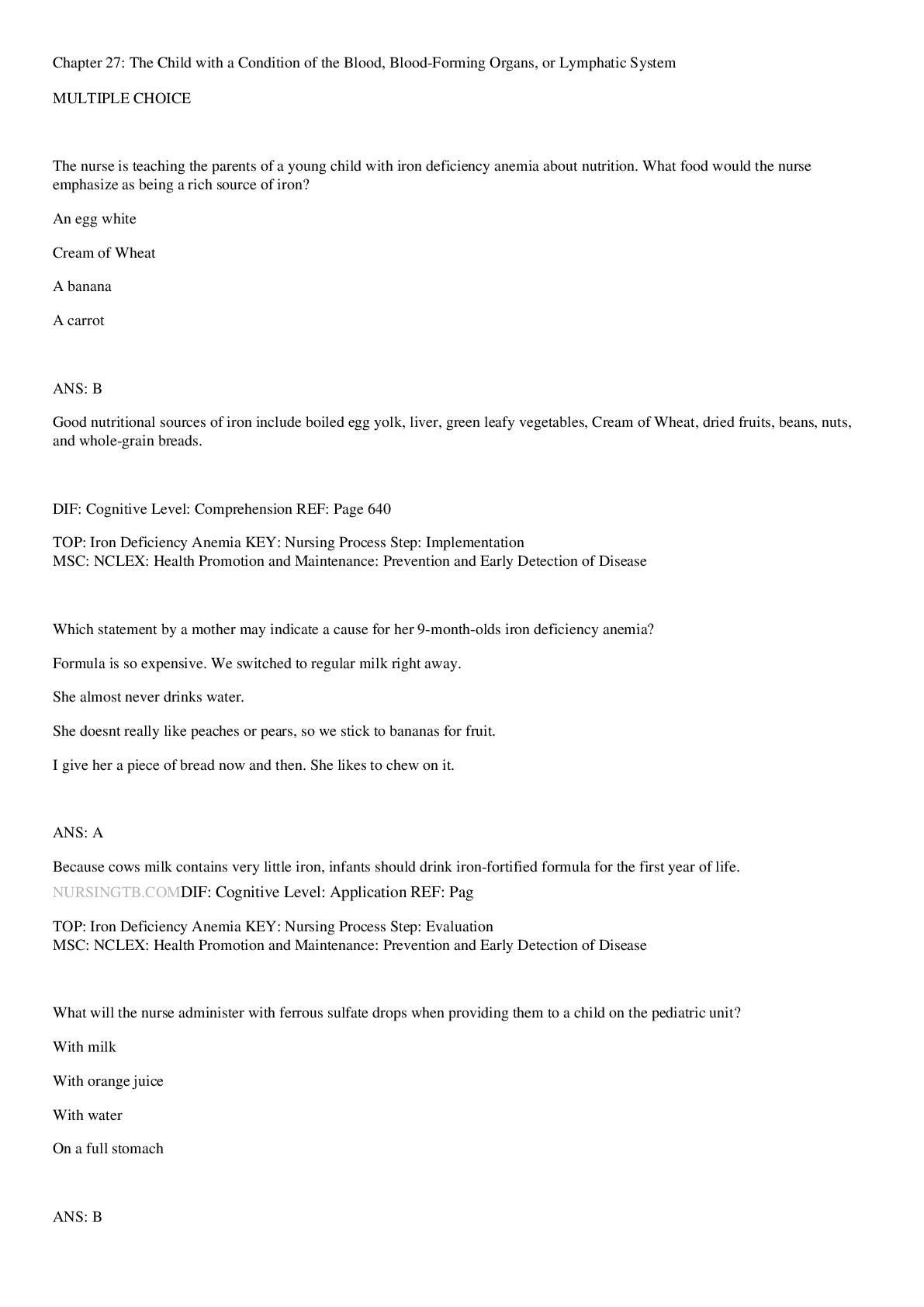


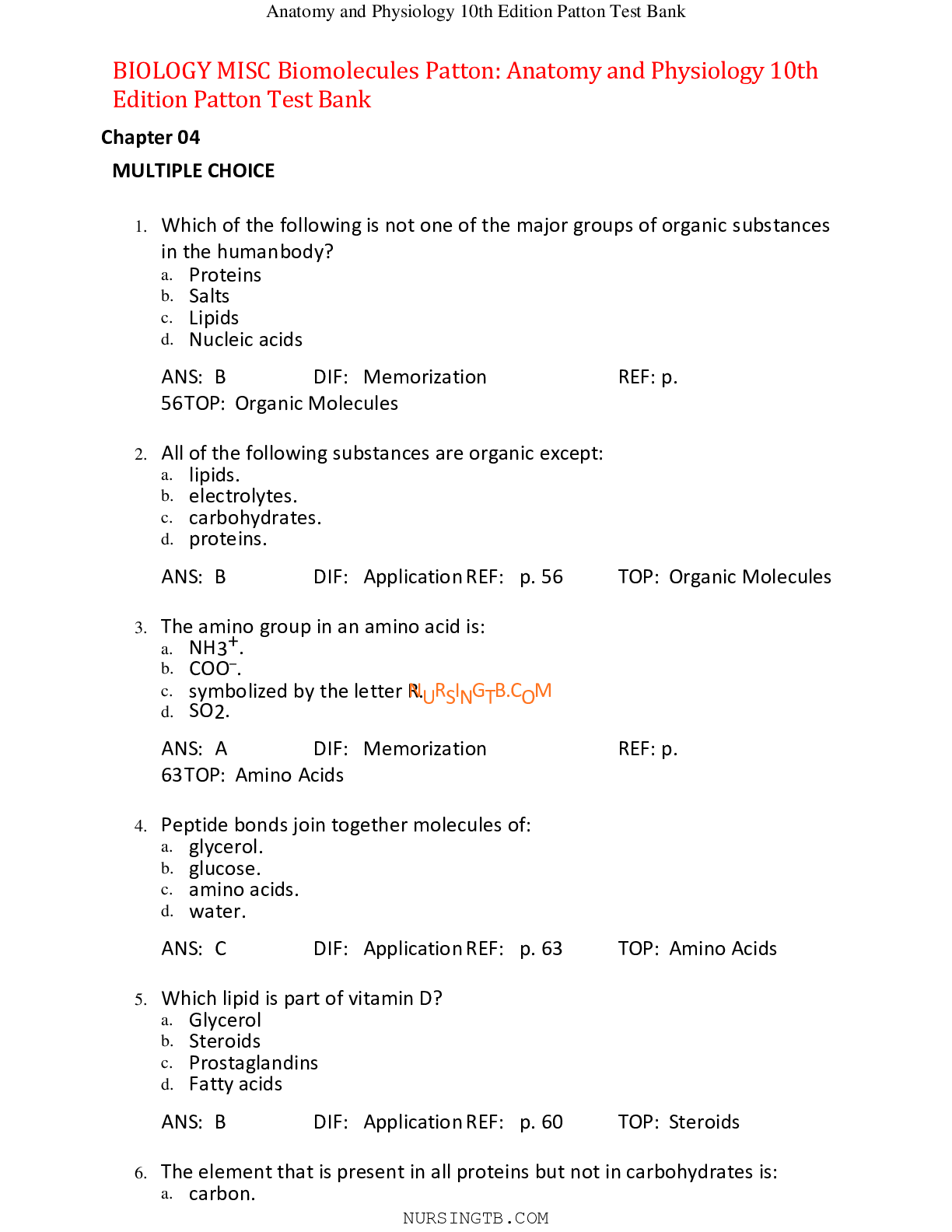
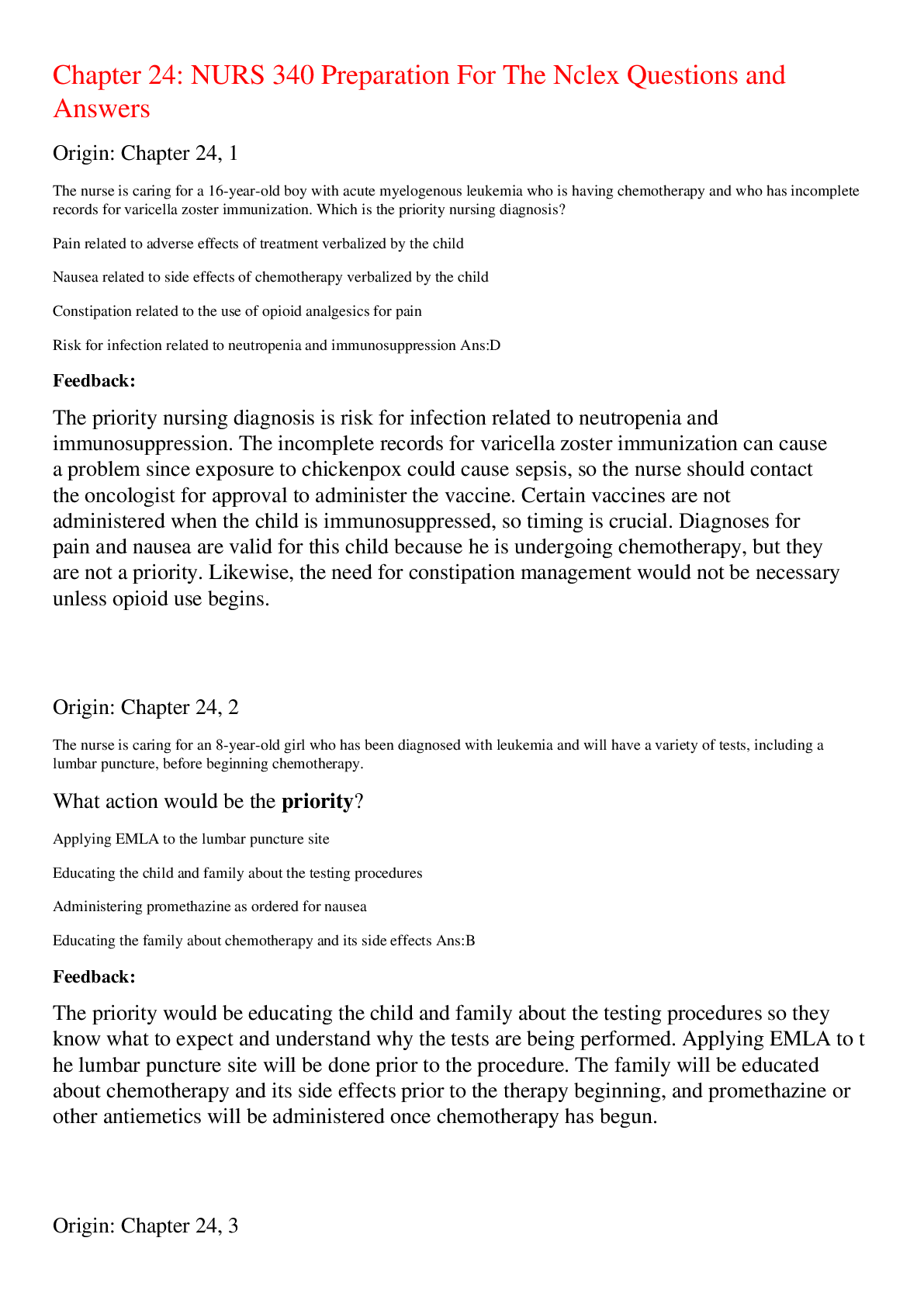
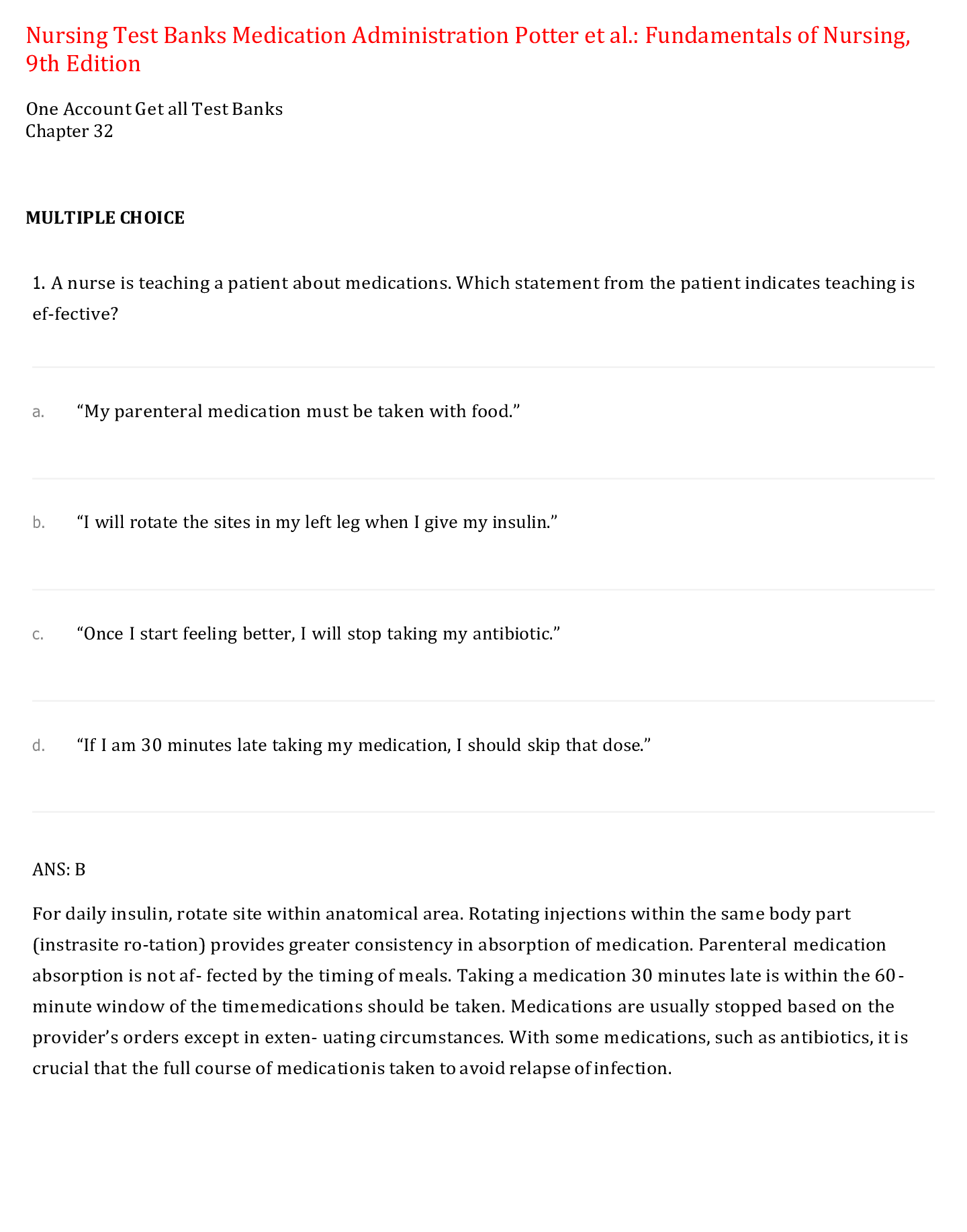

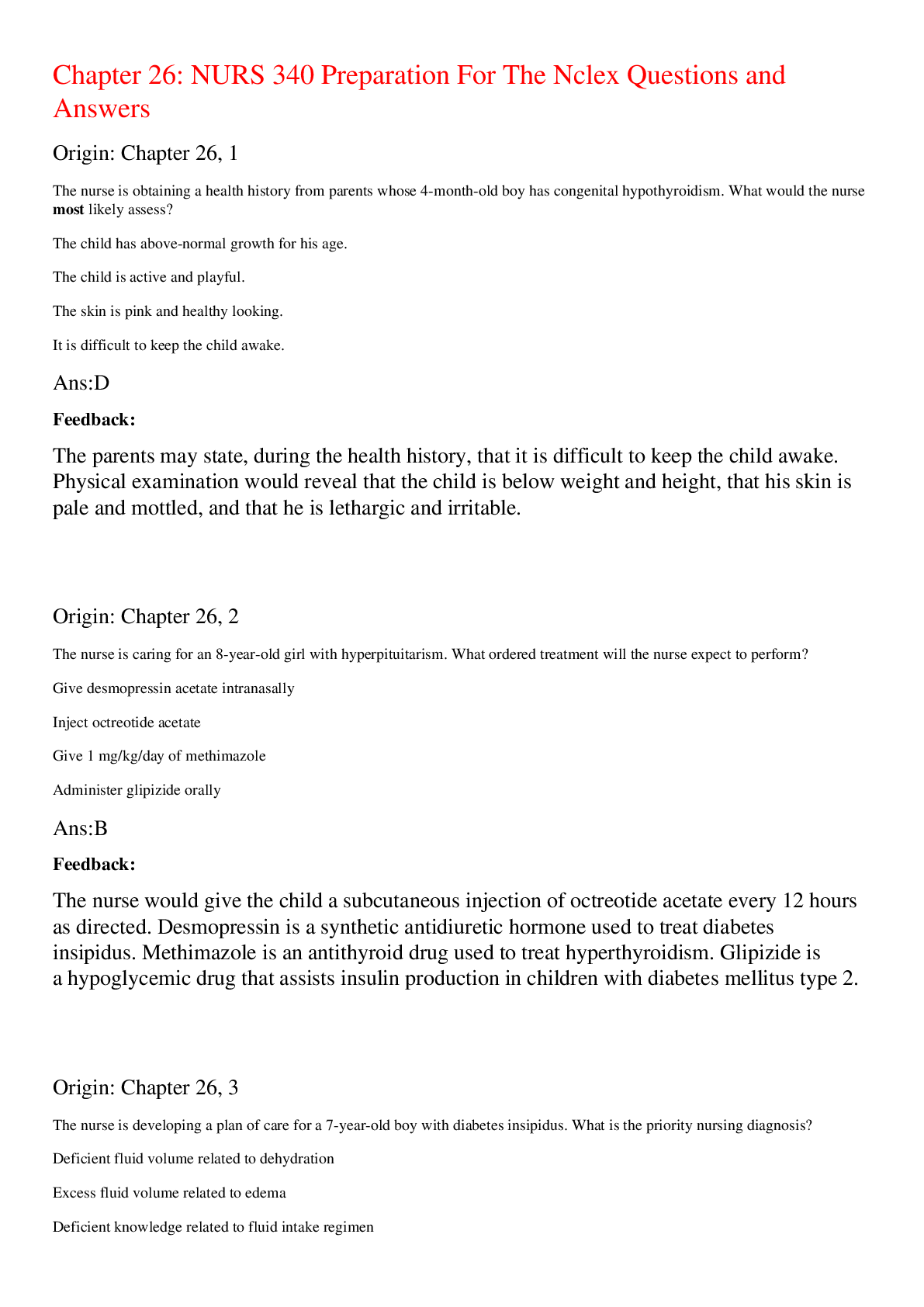
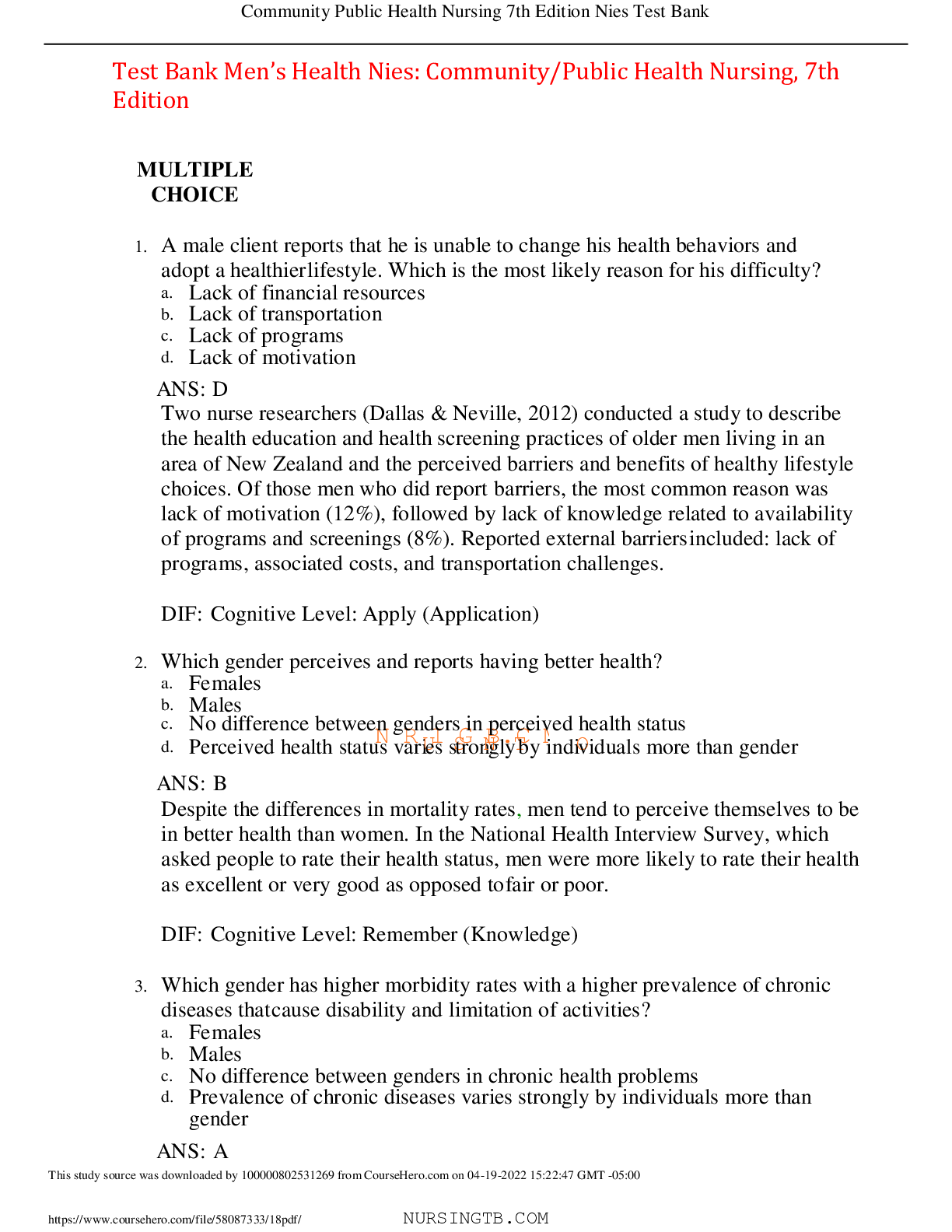
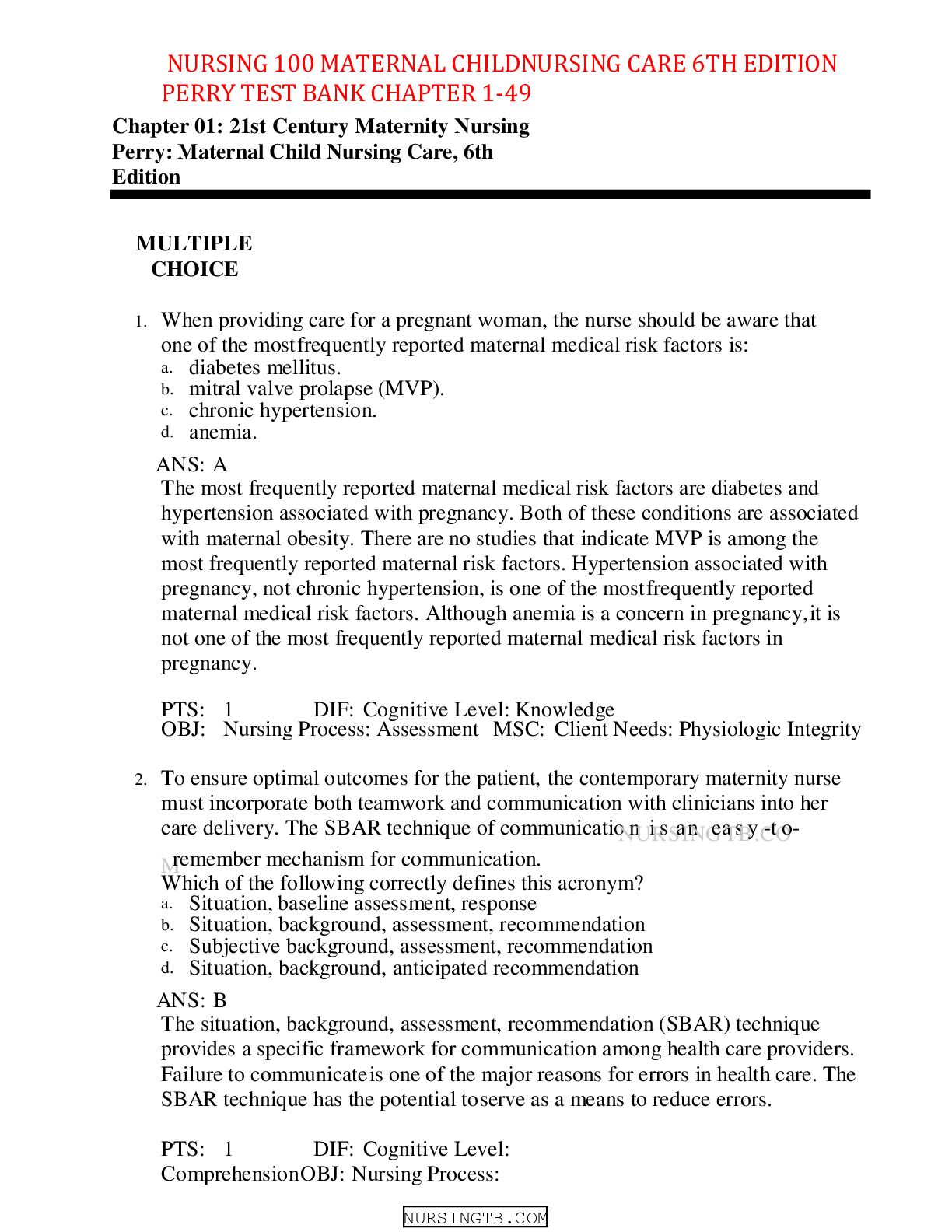

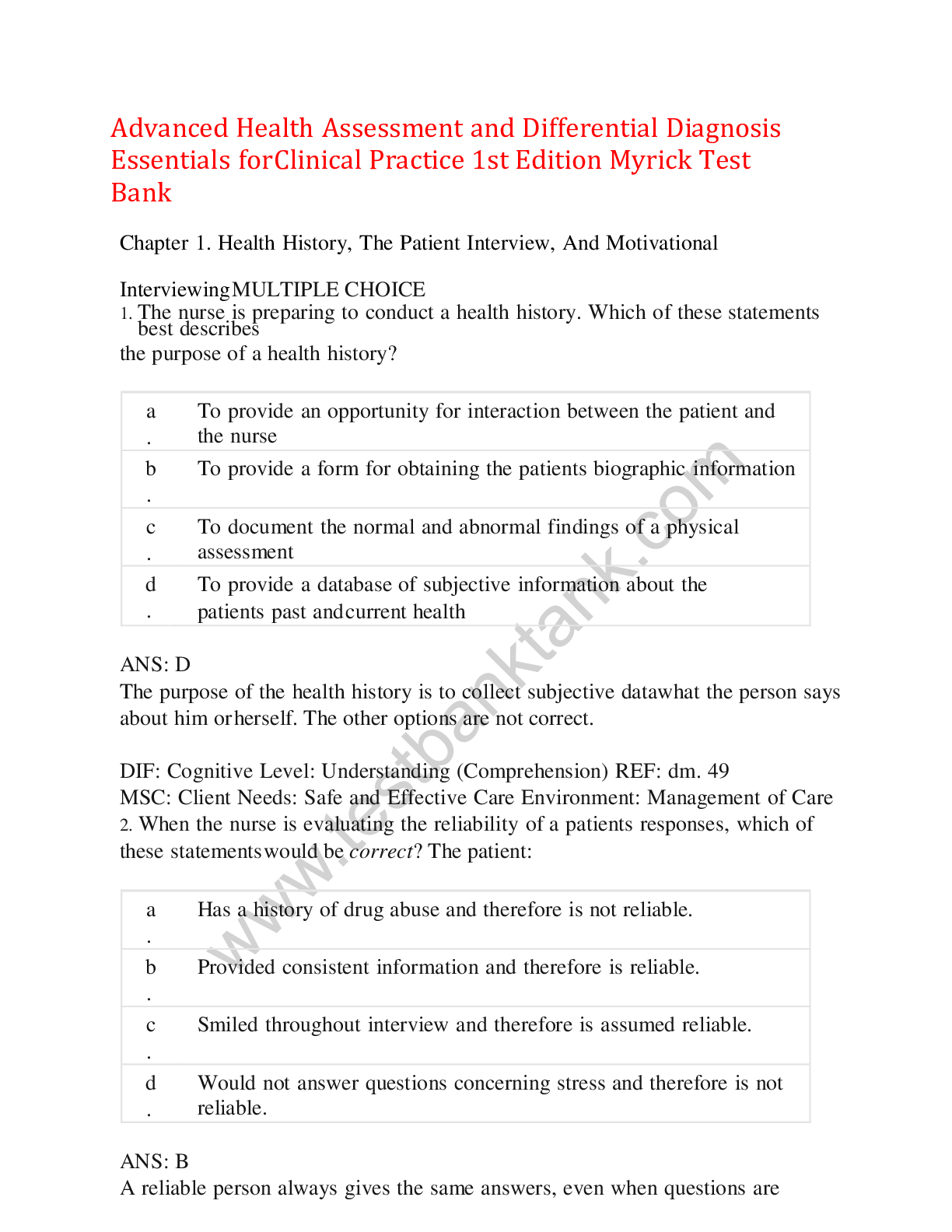
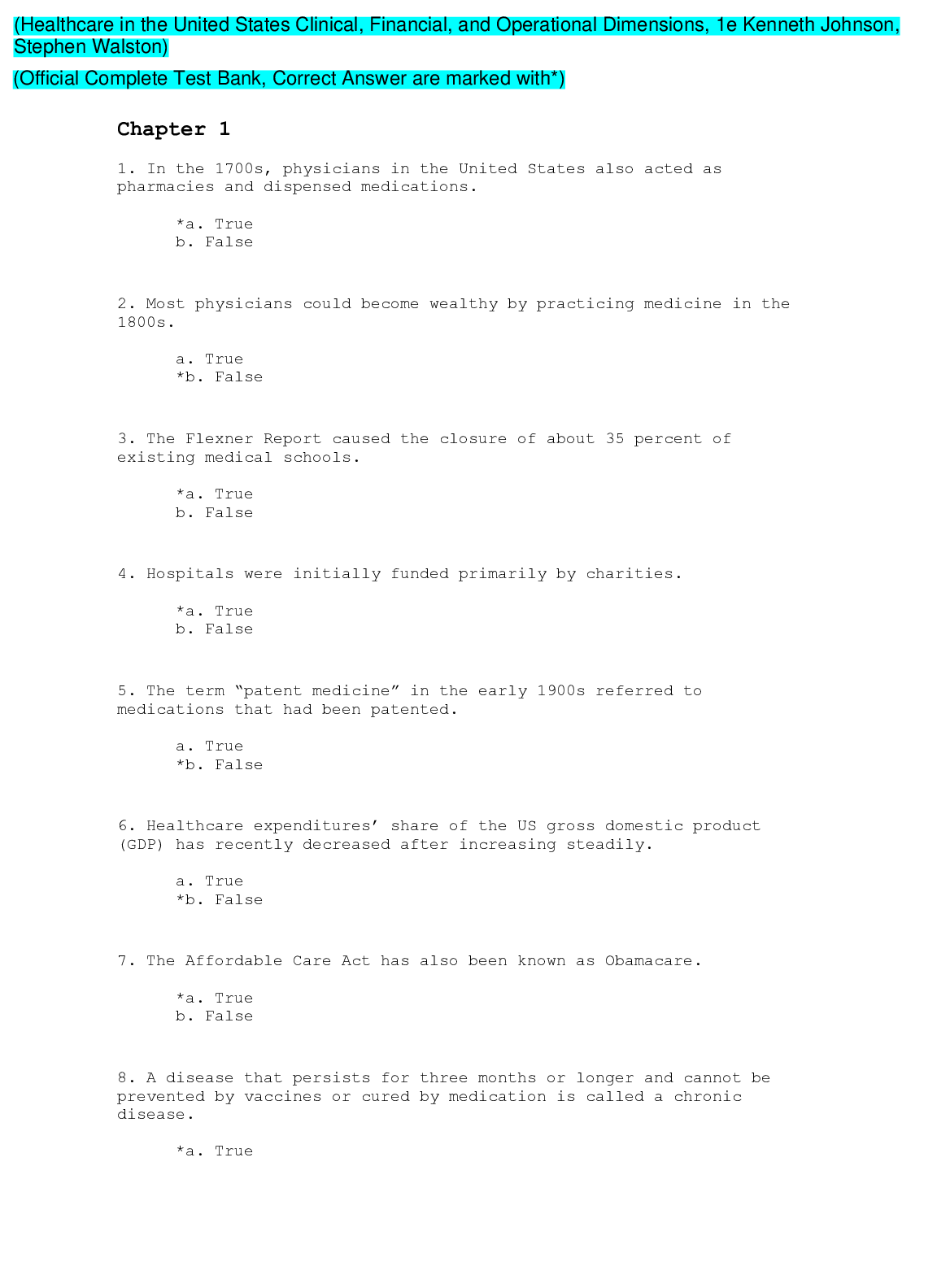
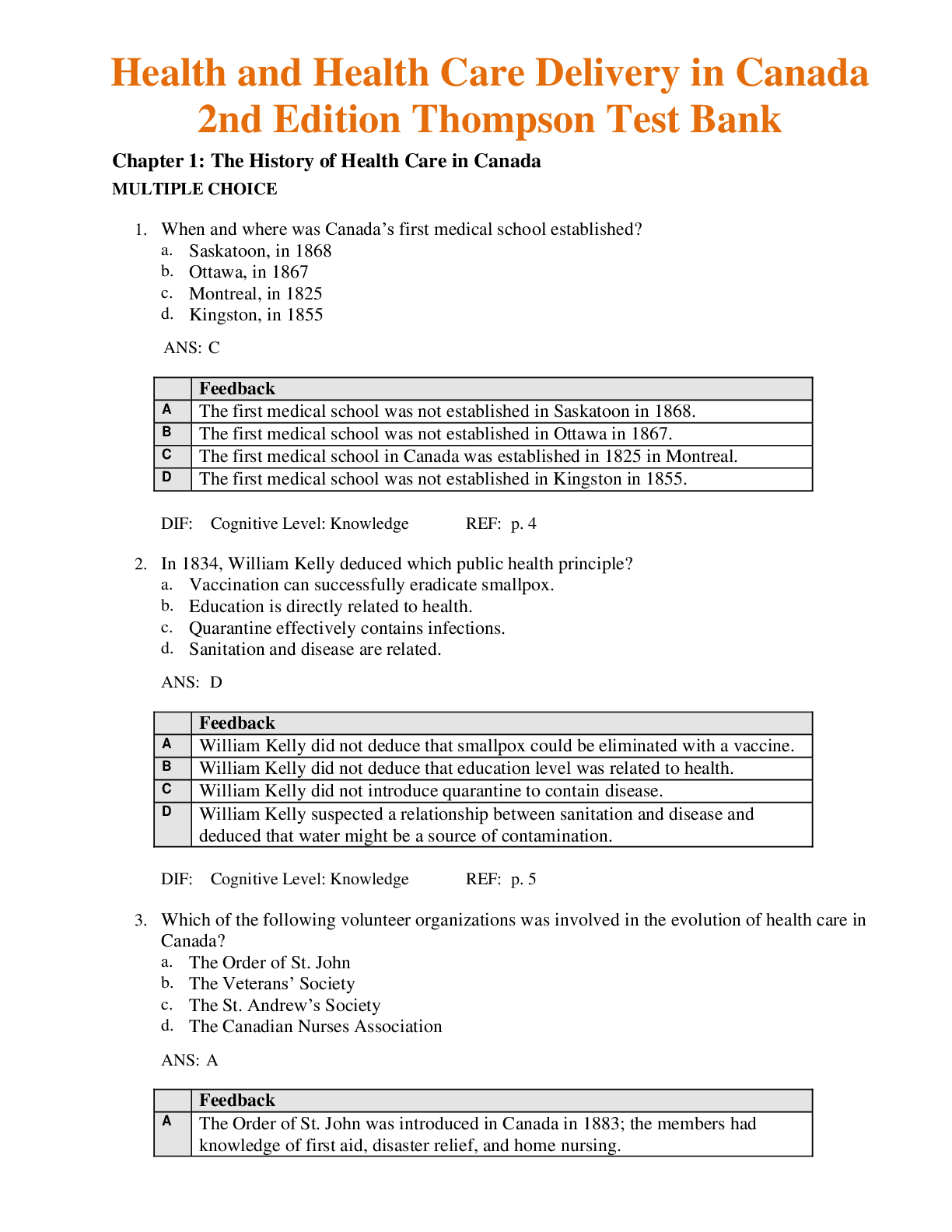
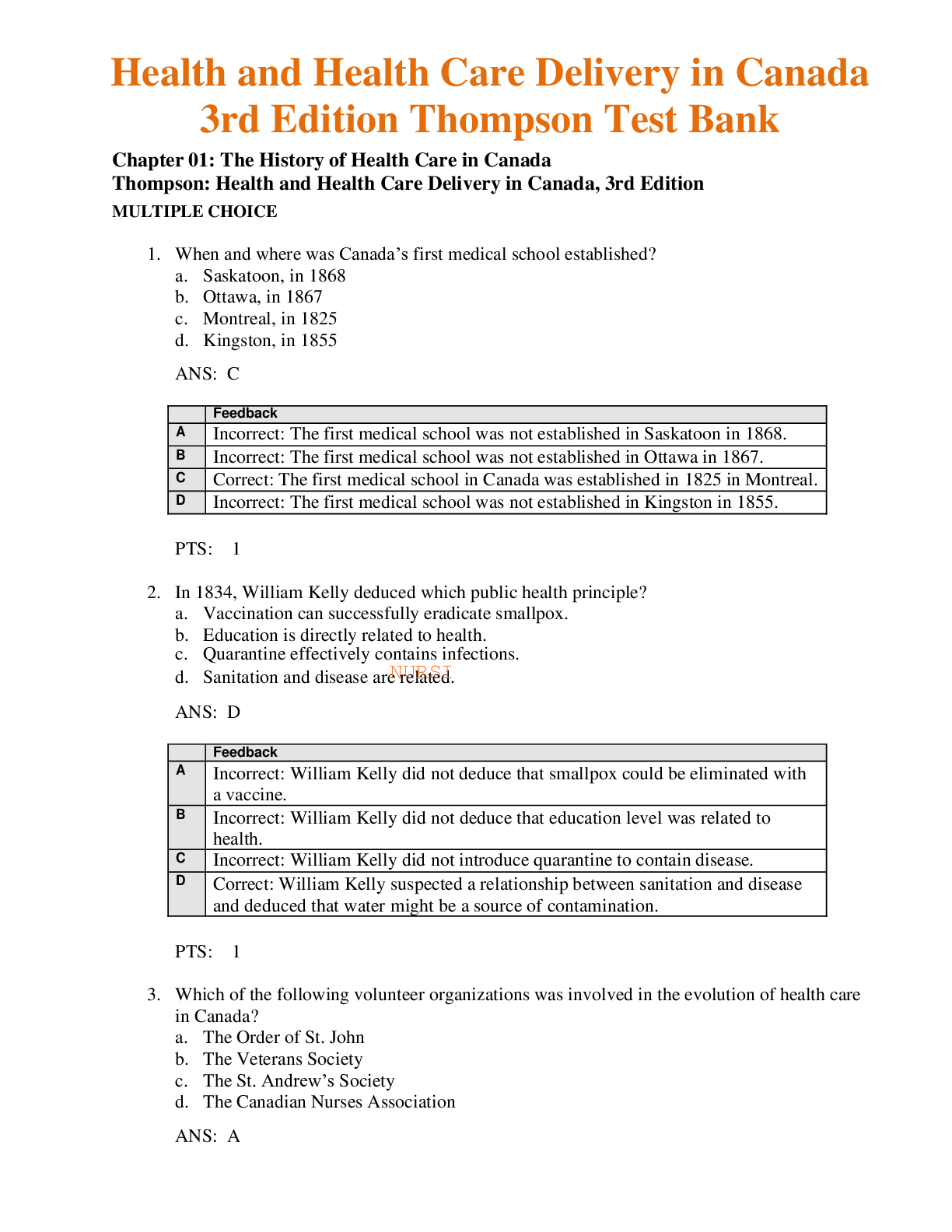
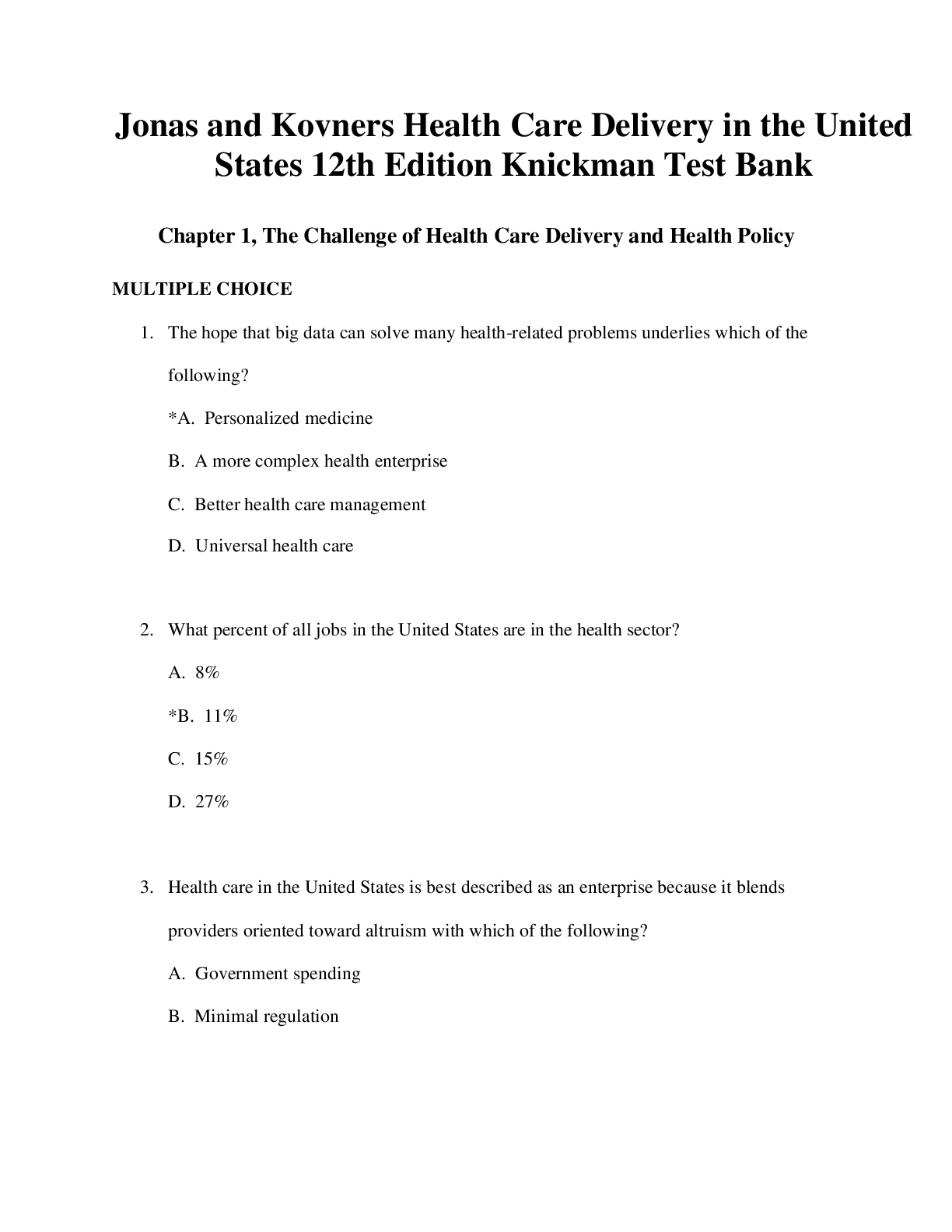
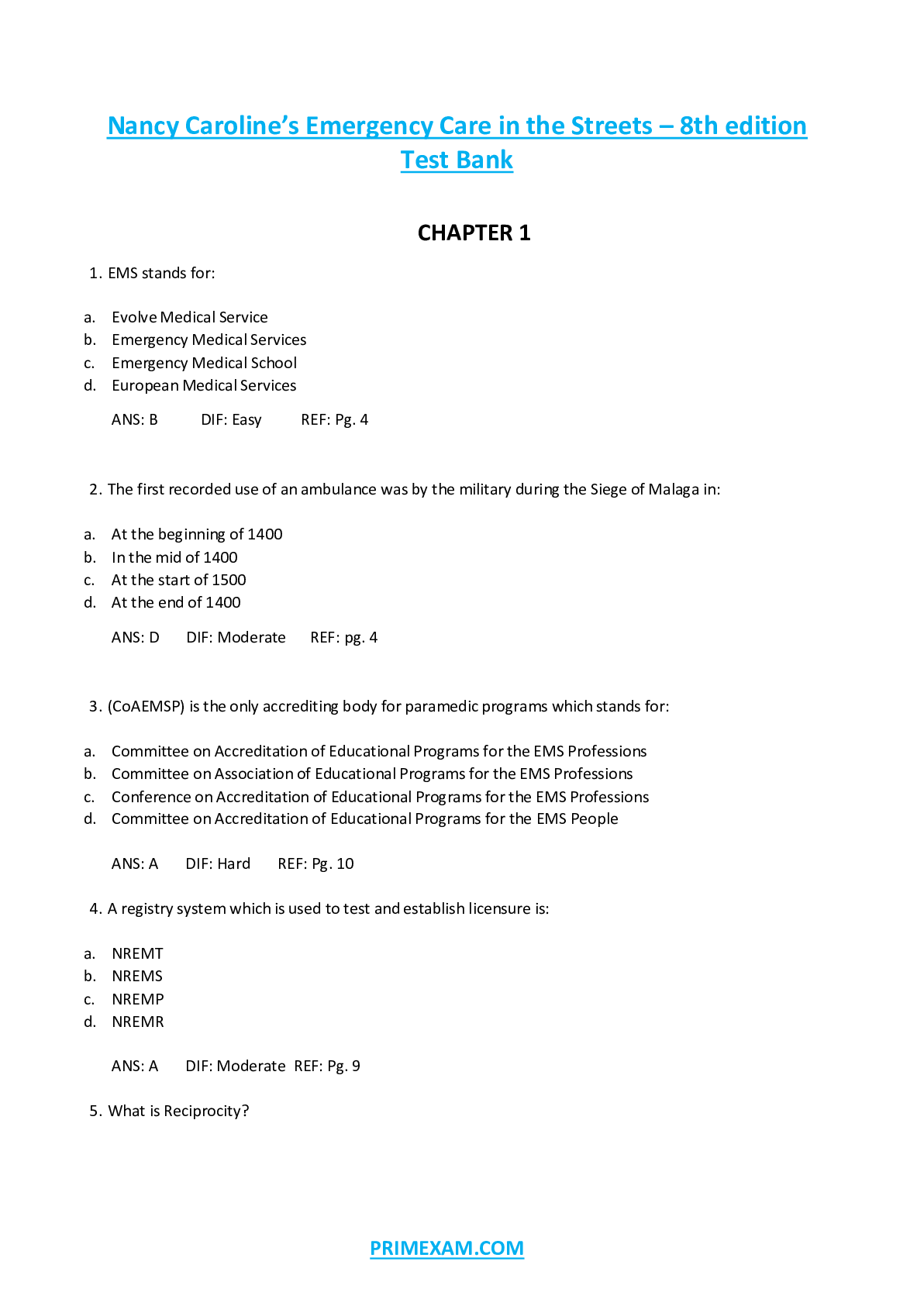
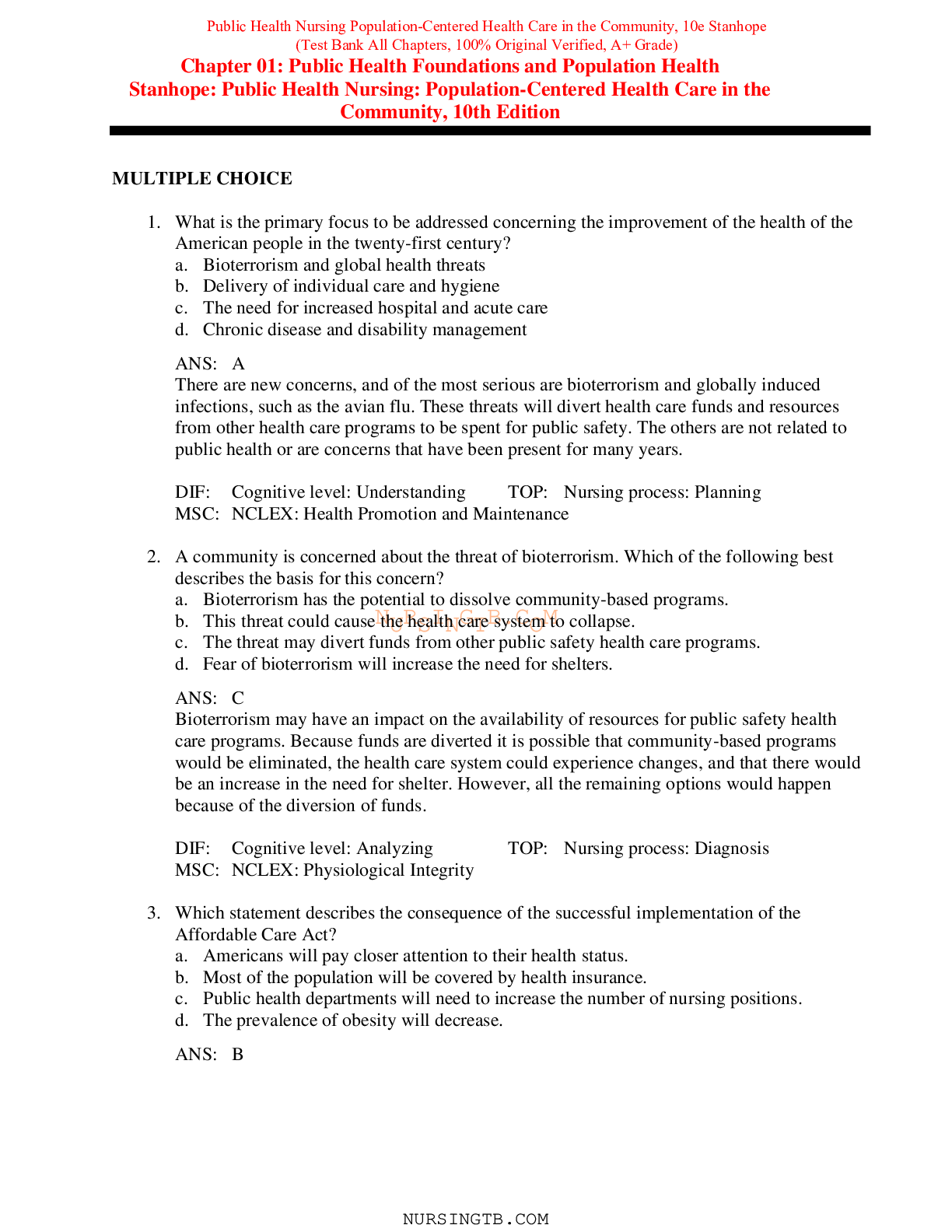


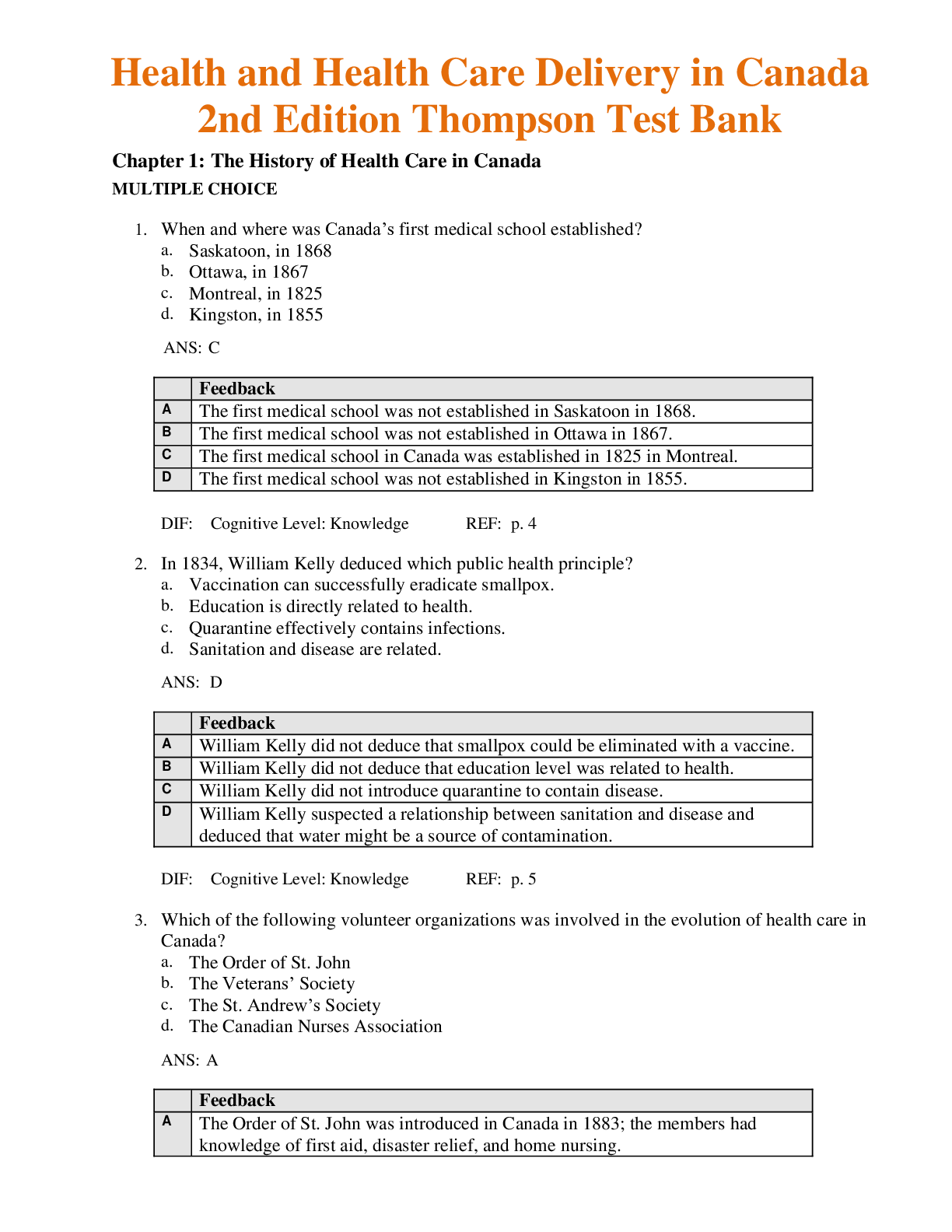
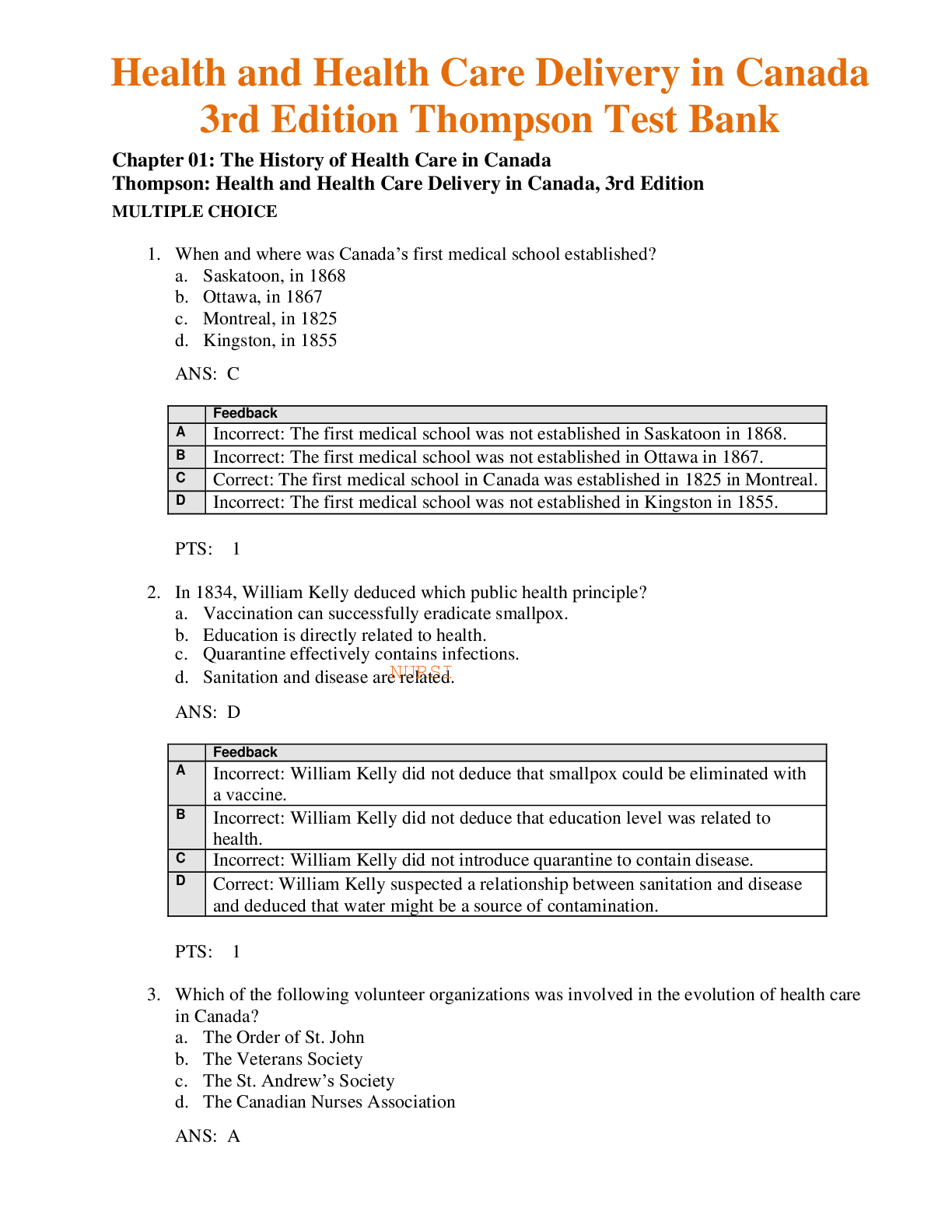
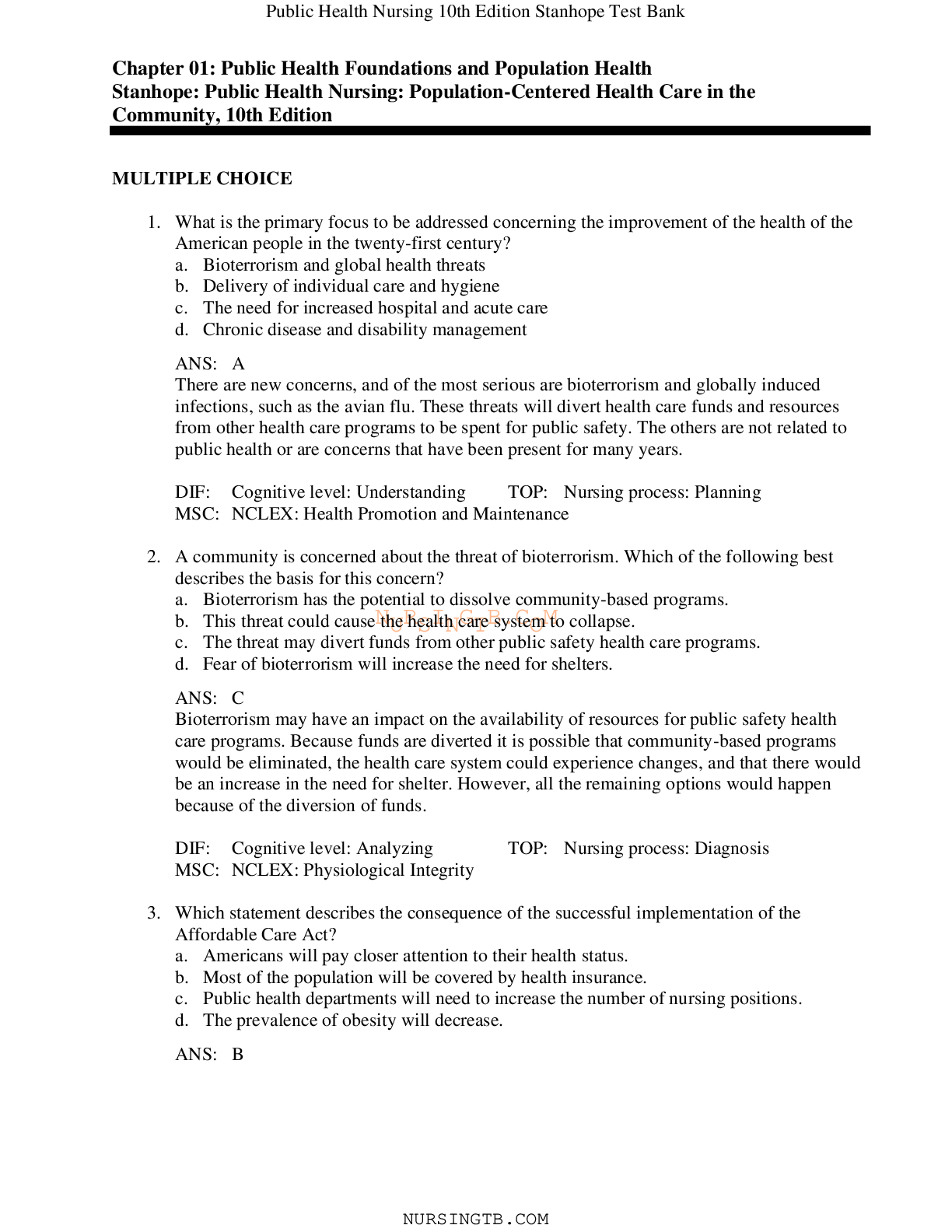
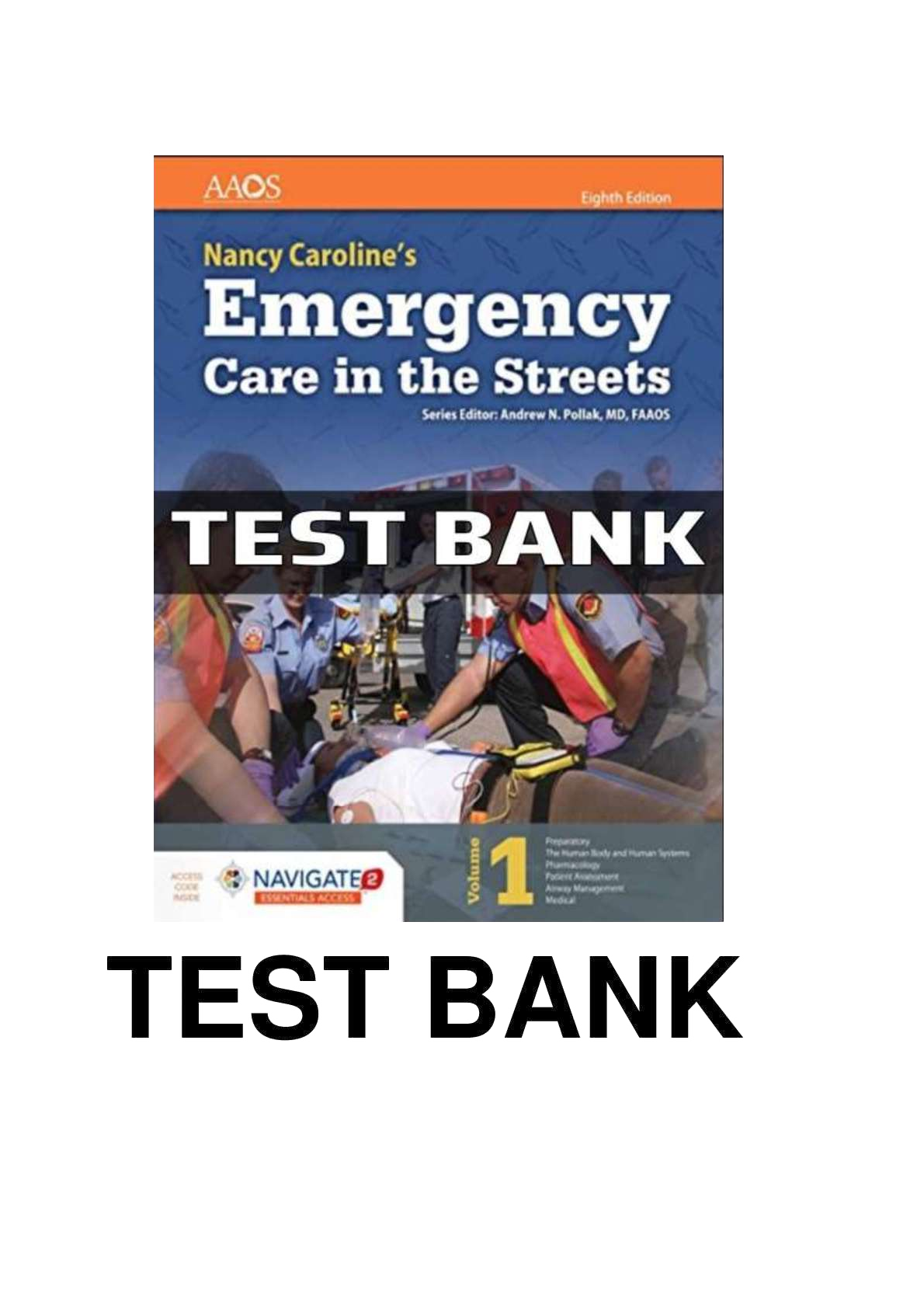
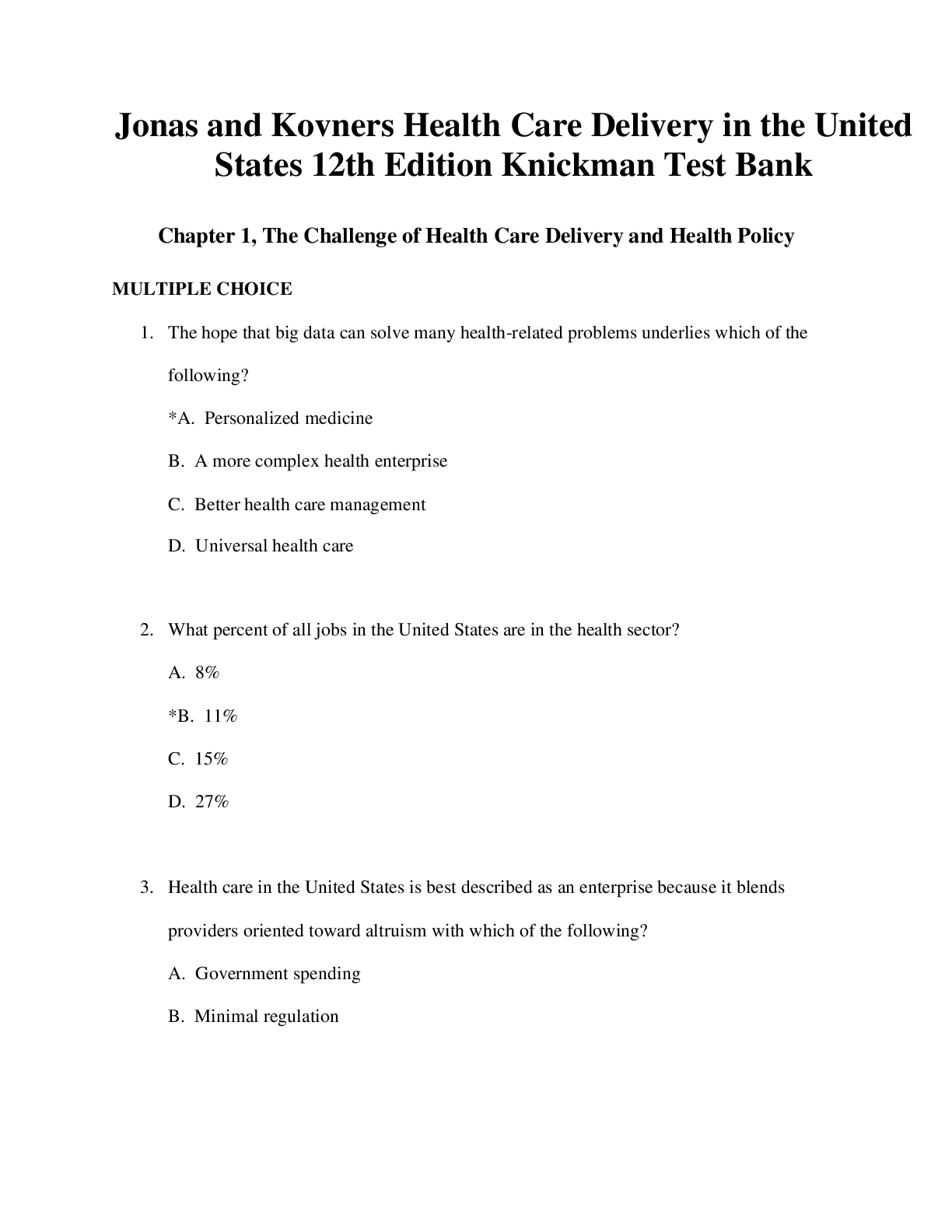
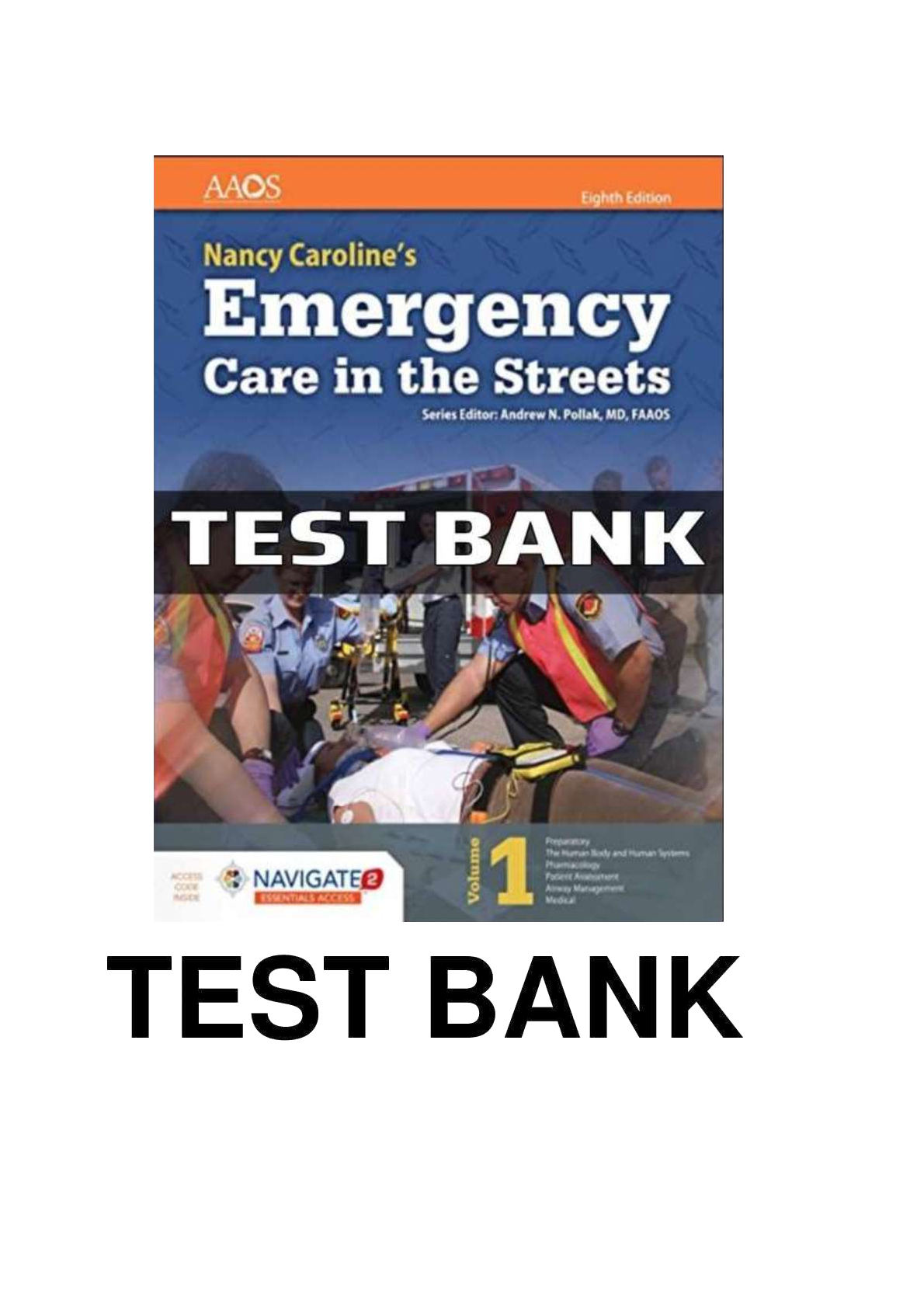
.png)
